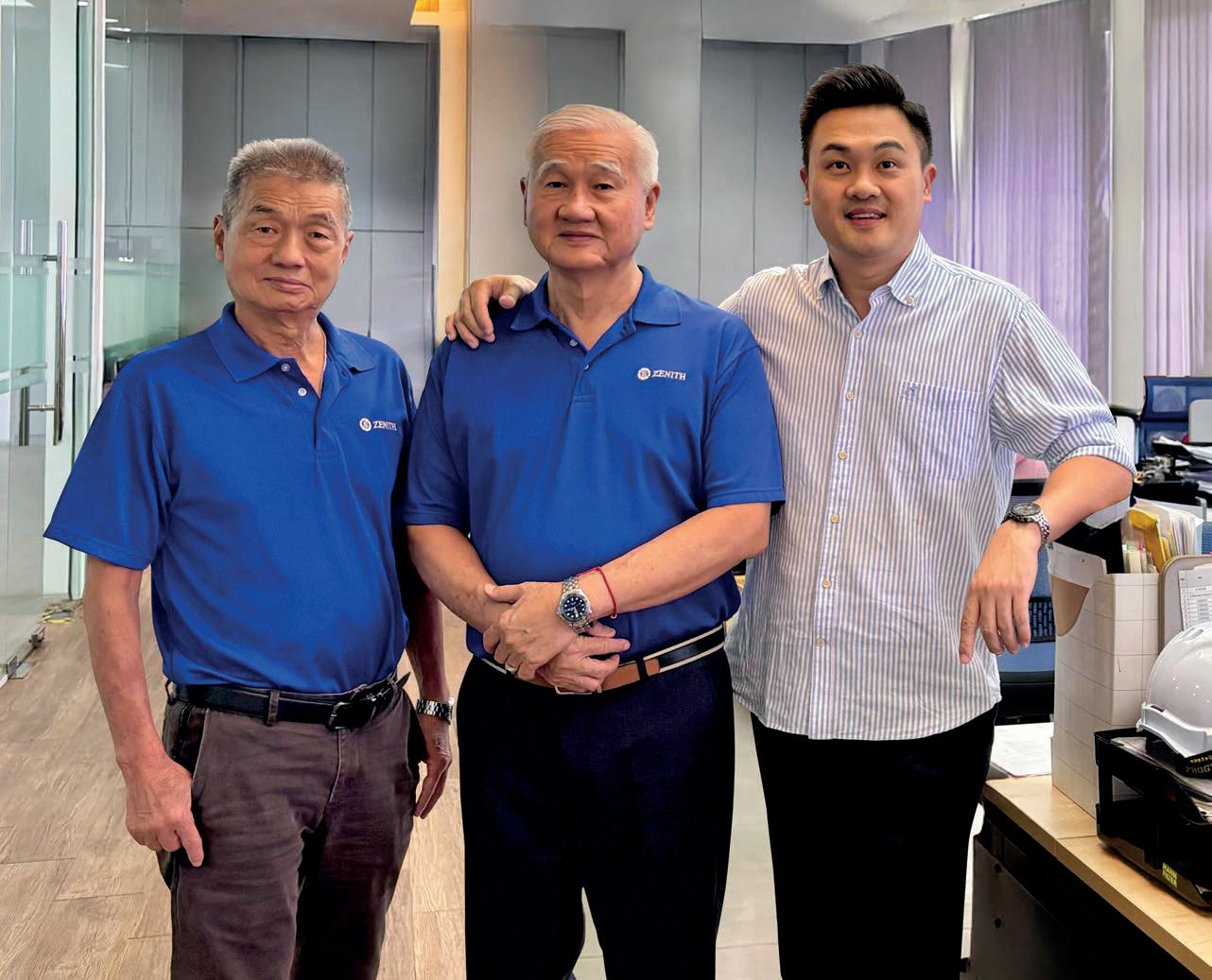
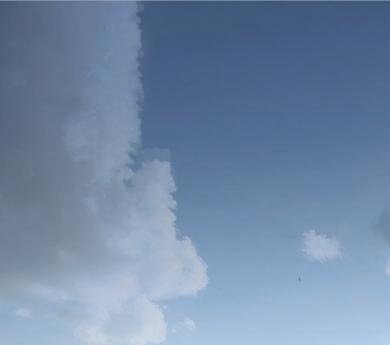







INDIVIDUAL RUNNING GEAR SOLUTIONS FOR SPECIAL TRANSPORT TASKS.
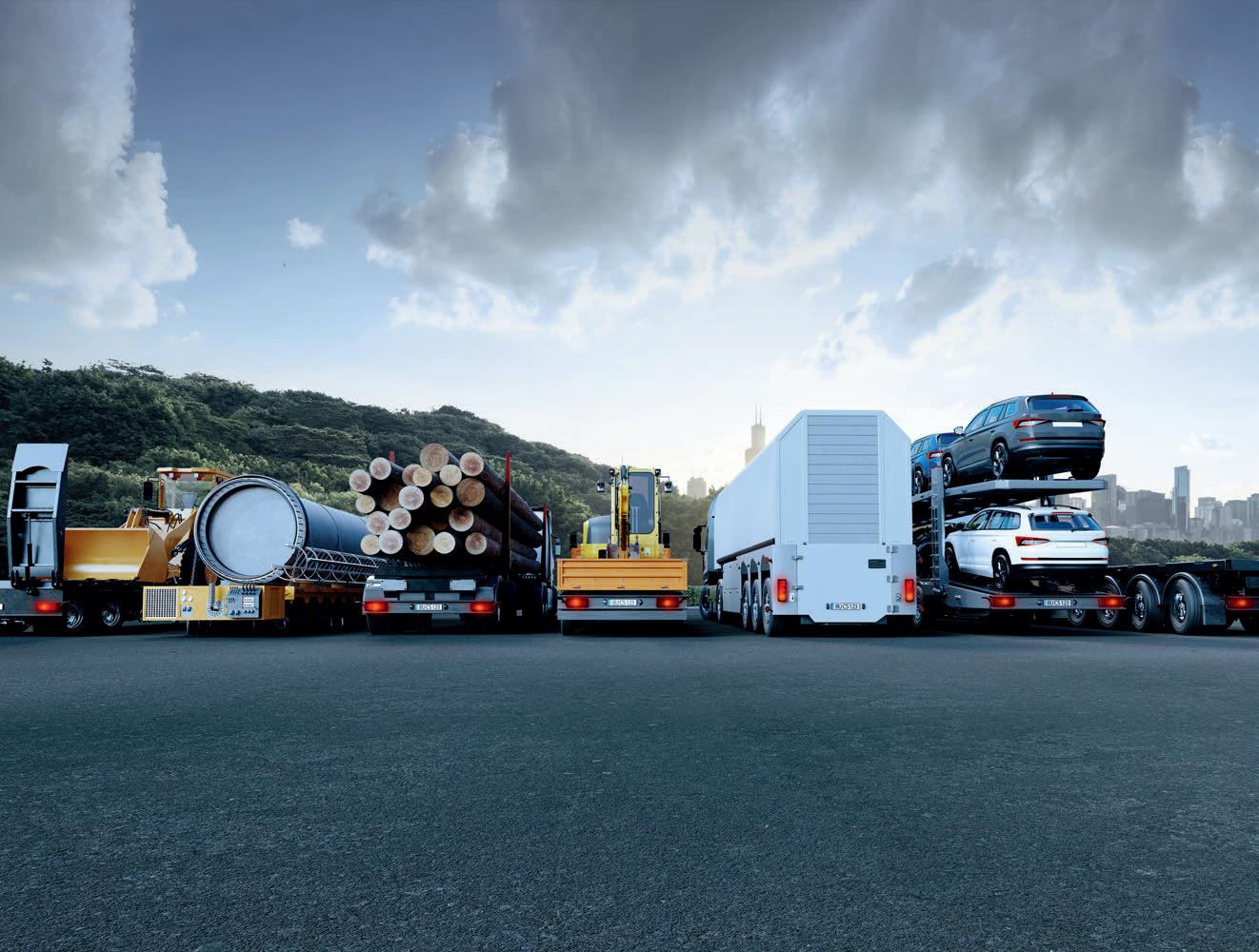

With our running gears and special axle solutions, there is nothing that can’t be transported. Your requirements motivate us to create new things. They inspire us to use our entire engineering expertise and decades of experience to develop innovative and reliable solutions together with you – customised for the type of vehicle and intended use.
The vehicle concepts for low-loaders are as varied as the transportation tasks. The use of air-sprung modules with rigid and steering axles is just one solution from our uniquely wide range of running gear systems for low-loaders. Challenge us!



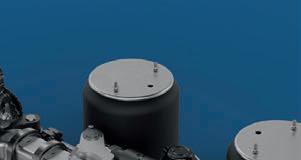




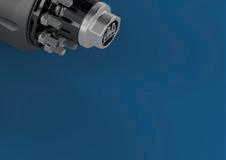

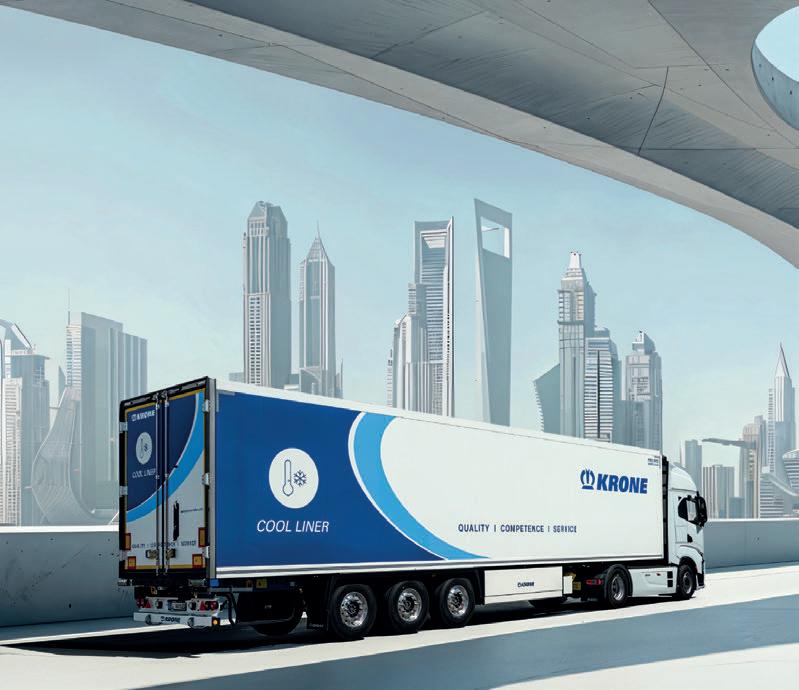
As with many edgling companies, Seri Zenith started out as a big dream of one man, who wanted to change the world. In his case it was the world of trailers in an evolving Malaysia.

Hyva


A quick glance through trade publications and online sources will quickly reveal that this time of year is a bumper period for trade shows, forums and exhibitions. Across the globe, in a diverse range of cities and hi-tech venues, there are a plethora of these events covering all aspects of transport, manufacturing logistics and materials.
We’ve enjoyed some major events and exhibitions, such as the 34th edition of Bauma in Munich, the biennial Brisbane Truck Show, Road Transport Expo and Multimodal in the UK, Transport Logistic 2025 in Munich, Break Bulk Europe in Rotterdam and LogisMed in Casablanca. e list goes on.
While we see the European and North American markets almost saturated with industry events, it’s pleasing to see more of these industry conclaves being hosted in places such as Morocco, Oman, Pakistan, South Korea, Armenia, Indonesia and more.
Imagine attempting to attend these events – exhausting and probably impossible. Or improbable. You would have to be running from venue to venue, country to country burning up innumerable CO2 emissions and creating a massive carbon footprint. But you would come away with a huge network of new friends and contacts and it would certainly be an interesting way to see the world and experience how other countries do business and operate. e burgeoning event management sector
is an incredibly huge and lucrative eld in its own right.
It’s interesting to note that the range and geographical spread of industry-related events now re ects the growth of the global truck and trailer markets in the African, APAC and LATAM sectors.
e mushrooming of these events is also indicative of how vital the transport and logistics sectors are globally. e common saying that a nation moves on its trucks (and trailers) is very true, and relevant, today. We all need food, clothing, resources, building materials and more to live and ourish. Only so much can be provided locally, particularly in places that face extreme weather conditions, or have underdeveloped industries, or are subject to geopolitical tensions.
Naturally, there is a heavy reliance on the transportation of goods to keep society moving, alive and functioning, as is seen in estimates that the global cold chain logistics industry will be worth about $372 billion USD (€344 billion) by 2029.
e global logistics industry highlights the importance of trade events and the need to be able to constantly share innovations, technologies, concerns and successes on a global basis for the betterment of society. We have the rest of 2025 to visit so many global events. Time to plan and go!
CEO John Murphy john.murphy@primecreative.com.au
COO
Christine Clancy christine.clancy@primecreative.com.au
INTERNATIONAL SALES
Ashley Blachford ashley.blachford@primecreative.com.au
MANAGING EDITOR
Luke Applebee luke.applebee@primecreative.com.au
EDITOR
Paul Lancaster paul.lancaster@primecreative.com.au
HEAD OF DESIGN
Blake Storey
DESIGN
Laura Drinkwater
CLIENT SUCCESS MANAGER
Maria Afendoulides maria.afendoulides@primecreative.com.au
COVER
Image: Seri Zenith.
HEAD OFFICE
Prime Creative Pty Ltd
379 Docklands Drive Docklands VIC 3008 Australia
+61 3 9690 8766 enquiries@primecreative.com.au www.globaltrailermag.com
SUBSCRIPTIONS
+61 3 9690 8766 subscriptions@primecreative.com.au
Global Trailer is available by subscription from the publisher. e rights of refusal are reserved by the publisher.
ARTICLES
All articles submitted for publication become the property of the publisher. e Editor reserves the right to adjust any article to conform with the magazine format.
COPYRIGHT
Global Trailer is owned by Prime Creative Media and published by John Murphy. All material in Global Trailer is copyright and no part may be reproduced or copied in any form or by any means (graphic, electronic or mechanical including information and retrieval systems) without written permission of the publisher. e Editor welcomes contributions but reserves the right to accept or reject any material. While every e ort has been made to ensure the accuracy of information, Prime Creative Media will not accept responsibility for errors or omissions or for any consequences arising from reliance on information published. e opinions expressed in Global Trailer are not necessarily the opinions of, or endorsed by the publisher unless otherwise stated.

FOLLOW US
Global Trailer Magazine



coupling –
Push-button trailer coupling
For anyone already using it, it’s a match made in heaven: The KKS allows you to automatically control and monitor the entire coupling and uncoupling process via remote control from the cab. And this includes the air, electrical and brake connections– with simple and intuitive operation. The future of logistics is now on the streets.
www.kks-successstories.com


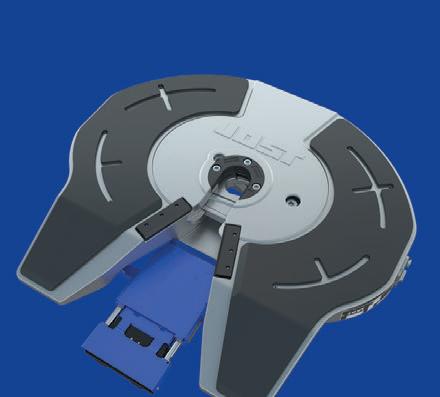





DP World has opened of its first ever warehouse in Singapore.
The 13,000 square metre facility is the latest addition to the company’s warehousing network in the Asia Pacific region.
As a result, DP World now manages more than 800,000 square metres of warehousing space, including facilities in Incheon, South Korea and Hong Kong. Within the last 12 months, the logistics
giant acquired leading Asian logistics firms Legend Global Logistics, based in Singapore, as well as Savan Logistics and Cargo Services Far East.
DP World in Asia Pacific CEO and Managing Director, Glen Hilton, said:
“This new addition will better fortify our offerings across the entire spectrum of logistics services, backed by our network of ports and terminals in the region.
“With these new facilities in Singapore, Hong Kong and South Korea
complementing the existing network of assets we manage, we are now better positioned than ever to deliver agile, efficient, and reliable logistics solutions.
“We will continue to make strategic investments in key markets to give the best possible service to our customers.”
Since relocating its APAC regional office to Singapore in 2021, DP World has more than tripled its employee numbers in that nation state, approximately 10 per cent of its global workforce.
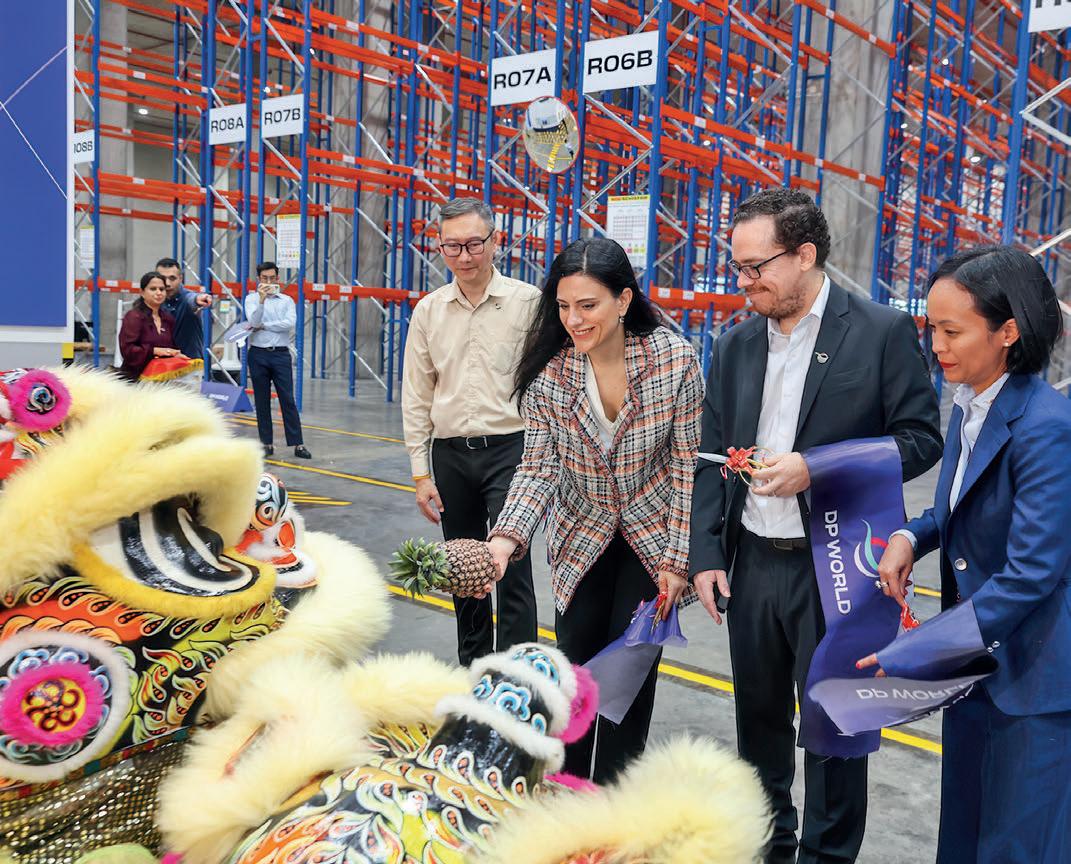







































A state of the art, upgraded and fully integrated global manufacturing centre of trailer systems and On/Off highway systems. Expertly designed and engineered with worldwide accessibility, offering you private label and OEM manufacturing solutions.
Drawing upon decades ofexpertisespanning Asia, Australia US, and in Europe,Fuwastandsasa globalmanufacturing powerhouse, unrivalled astheforemostnetwork ofspecialists intruckand trailer componentsacross the globe.








Germany’s famous Nürburgring will echo to the sounds of trucks racing efficiently on 10 July 2025, as Krone Trailers hosts the Truck Efficiency Run, a new feature of the Truck Grand Prix 2025.
The Efficiency Run, held in conjunction with the Goodyear FIA European Truck Racing Championship (ETRC), is an open competition for truck drivers in which the most efficient and professional driving style, not speed or horsepower, is the deciding factor.
“The competition makes efficiency tangible - beyond technical specifications,” said Krone Trailer’s Head of Marketing, Simon Richenhagen.
“We want to show how big an influence the driver has - and how real savings potential can be achieved through conscious, anticipatory driving.”
In the Efficiency Run, drivers from Germany will compete against each other operating different tractor units, trailers and drive types, as they seek to achieve the lowest fuel consumption under real-life conditions.
Polish trailer OEM, Wielton, has launched a new company specifically for the recycling and up-cycling of semitrailers and components.
ReTrailer Sp. z o.o., has at its core mission the sustainability of the transport industry.
It will focus on the second life cycle, or factory refurbishment, of semi-trailers, together with the sale and rental of used trailers and the responsible recycling and disposal of trailers beyond repair.
Its goal is to effectively manage the
full life cycle of semi-trailers - from production, through the operational phases to withdrawal from the market and proper disposal.
ReTrailer’s full refurbishment of semitrailers will enable transport companies to optimise the costs associated with fleet management, while complying with ESG principles and actively contributing to sustainable development and environmental protection.
This circular economy approach to trailers is aligned with the Wielton Group’s core strategy adopted for 2023-2027.







CEVA Logistics, a subsidiary of the Francebased CMA CGM Group, has strengthened its footprint in Türkiye after signing an agreement to acquire Turkish logistics provider, Borusan Tedarik.
The deal, worth $440 million USD (€387 million) will nearly double CEVA’s footprint in the strategic market as it agreed to acquire 100 per cent of Borusan Tedarik’s shares.
The agreement, which includes Borusan Tedarik’s subsidiaries in Germany, Bulgaria, Hong Kong and China, was subject to customary closing conditions and regulatory approvals.
Borusan Tedarik’s roots extend more than 50 years and it recorded a 2024 gross revenue of $567 million USD (€499 million). It offers logistics solutions in Turkey and globally, including contract logistics, finished vehicle logistics (FVL), full truckload (FTL) and less than truckload (LTL) ground transport, as well as air and ocean freight and customs.
As part of the purchase, CEVA Logistics will incorporate approximately 4,000 Borusan Tedarik employees, strengthening CEVA’s current operations in Türkiye, particularly in its core products of air, ocean and ground transport, contract logistics and FVL.
The acquisition will nearly double the size of CEVA’s domestic warehousing
and distribution operations, adding approximately 570,000 square metres to its existing 620,000 square metres of warehouse space.
The acquisition of Borusan Tedarik is part of CEVA Logistics’ continued growth following its 2019 acquisition by the CMA CGM Group.
At the SAF-Holland Plant 03 at Bessenbach, outside Frankfurt am Main, the production team is celebrating an historic milestonethe three millionth axle to be produced. Bessenbach 03 is regarded within SAFHolland as one of the central building blocks of the axle and suspension manufacturing division since 2000, and a key site or production of the SAF-Holland INTRA premium product.
As such, it underpins the SAF-Holland Group’s reputation as a reliable manufacturing partner in the trailer industry.
The success story of Plant 03 is founded on a continuous improvement process that has significantly increased productivity as well as quality over the years, with the factory’s PPM rate consistently lowered while automation was continuously expanded.
The Carrier Corporation will expand its global operations with the acquisition of its long-term partner Addvolt, S.A., a Portuguese transport electrification technology company.
Addvolt provides patented, non-invasive, low-maintenance electric systems for use with refrigerated vans, trucks, trailers and containers.
The Portuguese company’s plug-in electric systems for refrigerated transportation markets negate the use of fuel and also reduce major emissions, including noise, particulates, nitrogen oxide and carbon dioxide.
“By combining Addvolt’s deep expertise in electric systems and power management with Carrier’s industry-leading solutions, we are well-positioned to drive innovation beyond refrigerated transportation,” said Carrier’s President of Climate Solutions Transportation, Edward Dryden.
“This strategic partnership creates opportunity for new and emerging applications, while also continuing to build on the success we’ve already achieved together.”
The Addvolt acquisition strengthens Carrier’s electrification strategy by
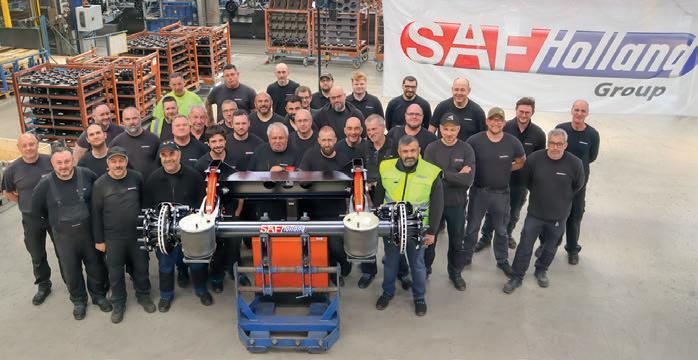


providing advanced electrification technology, integrated power management and power electronics capabilities connected with its energy management software and engineering talent.
The technology has already been implemented by Carrier Transicold customers in Europe utilising the Vector eCool system, the world’s first fully autonomous electric trailer refrigeration system.
Headquartered in Porto, Portugal, Addvolt has approximately 60 employees who will join the Carrier Climate Solutions Transportation segment.








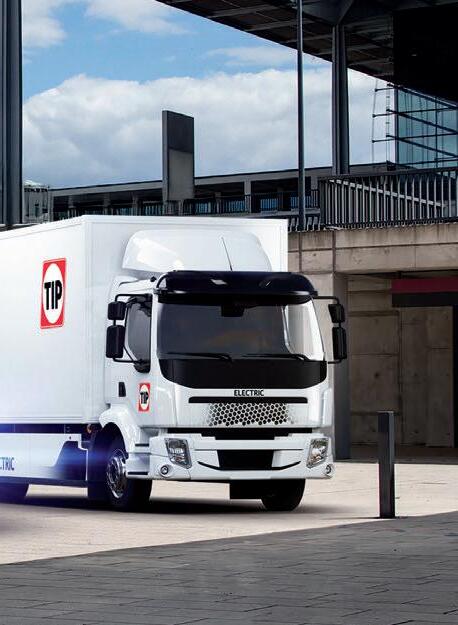






Global logistics provider Rhenus Group has rebranded its subsidiary Blu Logistics LATAM to Rhenus Logistics, enhancing the Group’s Latin American footprint.
The official rebranding follows from the acquisition of Blu Logistics LATAM in 2023, strengthening the Group’s commercial operations across Latin America, particularly in Argentina, Colombia, Ecuador, Mexico, Paraguay, and Uruguay. This transition to Rhenus Logistics also complements Rhenus existing operations in Argentina, Brazil, Chile, Colombia, and Mexico, while expanding its service portfolio in the LATAM region, particularly in the fields of air & ocean services and warehousing solutions.
The Group sees the unified branding of the two family-owned companies as offering its customers greater consistency, connectivity and access to the Group’s global network and service portfolio.
The rebranding is aligned with, and reflects, the Group’s growth in the LATAM region, as well as its strategic focus on expanding its Air & Ocean division in high-growth markets.
In 2024, the combined operations of Rhenus Logistics LATAM and Blu Logistics LATAM handled over 210,000 TEUs in full container load (FCL) shipments, a 16.67 per cent increase compared to the 180,000 TEUs managed solely by BLU Logistics LATAM in 2023.
Due to its strong ranking in ocean freight, Rhenus Logistics is recognised as a leading freight forwarder in the LATAM region. Rhenus Logistics will continue to provide a full suite of solutions in Latin America, including air and ocean freight, customs brokerage, warehousing, and project logistics.
Blu Logistics offices will operate under
the Rhenus brand name and benefit from the Rhenus Group’s global infrastructure, systems, and technology.
Macquarie Asset Management has agreed to acquire 100 per cent of Brazilian toll road company Monte Rodovias S.A.
Under the terms of the agreement Macquarie will acquire a diversified set of five toll roads across three states, totalling 740 km.
Monte Rodovias is comprised of the concessionaires for four toll roads in northeastern Brazil and a toll road in the central Brazilian agricultural state of Mato Grosso.
The existing roads connect the 4th largest city in Brazil with its main airport, one of the largest industrial complexes in the country and popular residential and tourist regions.
It includes Bahia Norte and Litoral Norte in Bahia, and Rota do Atlântico and Rota dos Coqueiros in Pernambuco.
In addition, the deal to purchase Monte Rodovias includes a 30-year concession for
a 344 km road in Mato Grosso, a central agricultural state in Brazil.
“Monte Rodovias is deeply committed to the sustainable development of Brazil — in regions like the Northeast, where efficient service drives local economic growth and social development, and in the CenterWest, where quality infrastructure helps the country’s food belt supply the global economy,” said Monte Rodovias CEO, Fabio Bonini.
“We are proud to be a platform that generates value for our granting authorities, our investors, and the communities we serve — ensuring operational excellence, continuous investment, and sustainable growth.”
Macquarie Asset Management has been operating in Brazil since 1999 and also has investments in the waste management, green energy and data centre sectors in the country.
Its current investments include Corredor Logística e Infraestrutura (CLI) in Brazil, Supervia Poniente in Mexico and the Odinsa Transport Platform in Colombia and Ecuador.
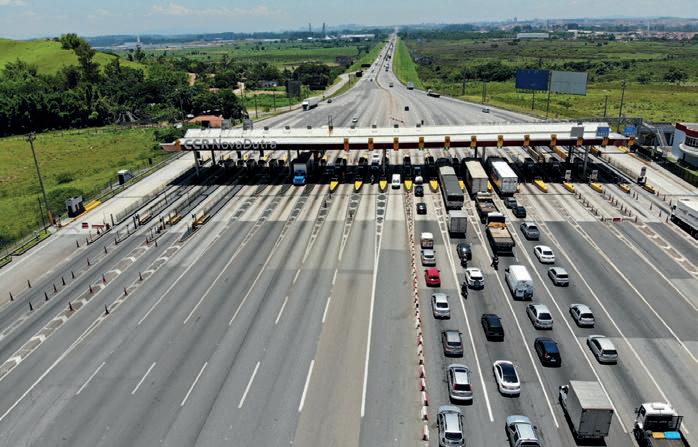


UPS has made a major expansion into healthcare logistics after it agreed to acquire the Andlauer Healthcare Group Inc. for $1.6 billion USD (€1.4 billion).
Andlauer is a North American supply chain management company headquartered in Canada that offers customised third-party logistics and specialised cold chain transportation solutions for the healthcare sector. This transaction will extend the global portfolio of end-to-end cold chain capabilities available to UPS Healthcare customers, who increasingly seek temperature-controlled and
precision logistics solutions.
UPS EVP and President of International, Healthcare and Supply Chain Solutions, Kate Gutmann, said: “Andlauer Healthcare Group will help us deliver expanded capability to our customers, driving best in class patient outcomes while contributing to our overall growth plans across the business.
“This acquisition marks another important step in our declaration to be the number one complex healthcare logistics and premium international logistics provider in the world.”
Under agreement, Andlauer shareholders will receive $55 CAD (€35) per share in
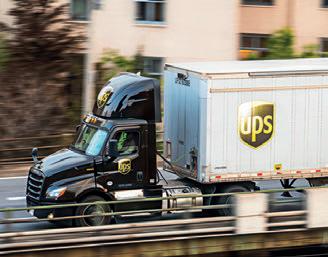
UPS will expand into healthcare logistics with its latest purchase.
Image: KKF/stock.adobe.com
cash, representing the total purchase price of approximately $2.2 billion CAD (USD $1.6 billion, €1.4 billion).



Haldex REMAN, part of the global SAFHolland network, celebrated its 40th anniversary of operations at its Marion, North Carolina base.
The milestone underscores the company’s commitment to quality, sustainability, and longstanding contributions to the local community and the commercial vehicle industry.
In January 2025, SAF-Holland announced the rebranding of its remanufactured brand as Haldex REMAN, replacing the former Like-Nu brand.
This was after SAF-Holland completed its acquisition of Haldex in March 2023. Since opening its doors in 1985, the Marion facility has been at the heart of Haldex’s North American remanufacturing operations.
The REMAN product line includes ABS valves, air disc brake calipers, air dryers, compressors, hydraulic brake calipers, and water pumps.
The Marion site has grown from a small operation into a state-of-the-art facility, employing more than 60 skilled team members, who deliver high-performance, cost-effective solutions to fleets across North America.
“We’re incredibly proud of the people, partnerships, and progress that have shaped the last 40 years, and we’re excited for the future as we continue to support our customers with the quality and reliability they expect from Haldex,” said Haldex Director of Operations, Nathan Duncan.
Family owned and operated logistics company, Leschaco Group, named Michael Kopecky as its new Global Head of Tank Container, effective 1 July 2025.
Previously serving as Head of the Tank Container Competence Center (TCCC) Americas, Kopecky will continue to be based in Houston and assume a dual role until further notice.
Kopecky joined the Leschaco Group in January 2024 as Deputy General Manager for TCCC Americas. Since then, he has led the tank container business in the Americas with ‘outstanding dedication’, successfully driving the unit forward together with his team in Houston. He brings extensive expertise in the tank container segment, gained through more than a decade with the Hoyer Group, where he most recently held the
position of Director of Projects/Financial & Executive Officer.
In his new role as Global Head of Tank Container, Kopecky will oversee Leschaco’s global tank container operations. He will focus on further advancing the strategic initiatives of this core business unit, collaborating with global teams and stakeholders to foster operational excellence and ensure customer satisfaction.
Kopecky shared his enthusiasm for the new challenge, saying: “The global tank container market holds tremendous potential, and I look forward to working closely with our talented teams worldwide to drive innovation, deliver exceptional value to our customers, and strengthen our position as a leading player in this dynamic sector.”
Leschaco was founded as Lexzau, Scharbau in Hamburg in 1879. Today, the Bremen-based business operates in more than 24 countries with its dedicated subsidiaries and a close network of selected agents all over the world. It has a total staff of around 4,000 employees and an annual gross revenue of €1 billion.
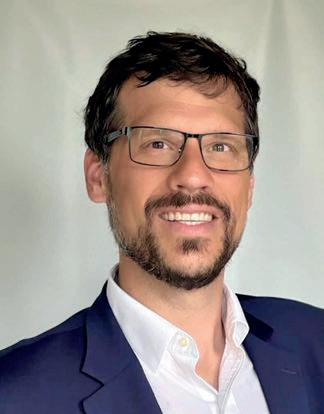

Alabama-based trailer manufacturer, Pitts Trailers, has promoted a key team member to the role of General Manager.



In his new role as GM, Brandon Fretwell will work to bridge any gaps between the firm’s departments, as well as enhance operational processes and drive improvements in production capacity, quality and safety.
Fretwell has 17 years’ experience at Pitts Trailers, holding key roles as Design Engineer and Engineering Manager.
Fretwell’s appointment recognises and rewards his commitment to innovation and customer-focused development, attributes that will strengthen Pitts Trailers’ leadership in the industry. Pitts Trailers has also appointed

Dustin Preslar as Plant Manager of its Pittsview headquarters.
Preslar brings to the role extensive manufacturing expertise, coupled with his commitment to excellence.
As plant manager, he will play a leading role in maintaining productivity and quality at the trailer company’s facility.
A division of Pitts Enterprises, Pitts Trailers is a top 10 trailer manufacturer in the US.
It is renowned as the world’s largest complete line forestry trailer manufacturer and offers a wide variety of truck trailers, tailor-made for the foresty industry.


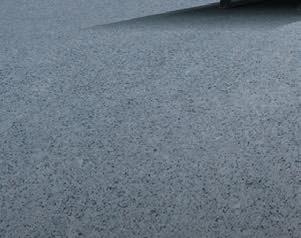
Transport temperatured goods more cost-effectively. The vapour diffusiontight FERROPLAST® body together with the efficient S.CU cooling unit and the smart TrailerConnect® telematics system ensure optimised and reliable transportation. Also available fully electric as S.KOe COOL.













AS WITH MANY FLEDGLING COMPANIES, SERI ZENITH STARTED OUT AS A BIG DREAM OF ONE MAN, WHO WANTED TO CHANGE THE WORLD. IN HIS CASE IT WAS THE WORLD OF TRAILERS IN AN EVOLVING MALAYSIA.
What’s in a name?

Choosing a name for your rst business enterprise is no mean feat. e name, which will hopefully be around for many generations, needs to convey the importance of the business, the eld it operates in and be associated with success, good fortune and prosperity.

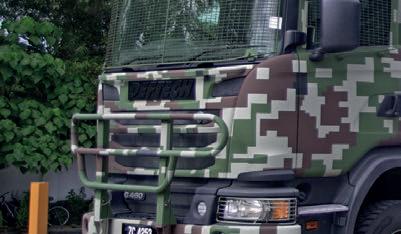




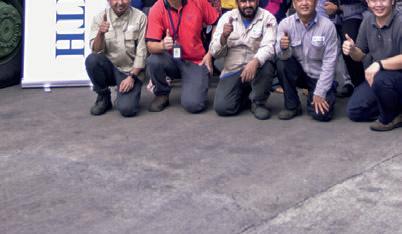

ink of Apple, Nike, Adidas, Amazon, Mercedes Benz ... ere’s a lot of pressure in the naming process. Choosing the right, and most appropriate, business name that conveys such lo y ideals





is o en the rst achievement of a new venture.
Koh Moi Tee, a man in his twenties, had a bright idea to start his own trailer business – the concept to create an innovative out t of his own had been fomenting in his mind for some years. is was Selangor, Malaysia in 1976, and he needed a little help to get things started.
e 22-year-old Koh wanted a name to embody the power and success of the business he envisioned it would one represent.
His solution?
He asked his youngest, 15-year-old brother, still in high school, to search through an English dictionary for an appropriate word.
A er hours spent searching the dictionary for the best name, the eldest Koh brother ultimately chose the word ‘Zenith’.
Reading the de nition, it was clear to the older Koh the perfect name for his new business was at the end of the dictionary.
Mr. Koh was now ready to set his own path.
But let us rewind a few years to understand how Seri Zenith germinated in the mind of a teenage Koh Moi Tee, as it was to become the realisation of an unshakeable dream.
As the eldest son of a close-knit Teochew family, there was an expectation he would forgo education for gainful employment that could support the large family.
As with many of his generation, Koh Moi Tee le formal education behind a er primary school and trained his eyes rmly on a trade that would give him the skills to support his family.
As the eldest son he did what was expected. Filial duty.
His employment started out small at the British company, Hargill Engineering, based in Selangor, where he was tasked with odd jobs around the workshop.
But he was a young boy with big dreams, rapidly rising from a junior position to supervisor through sheer determination and skill.
Working among highly quali ed and trained engineers instilled in the eager Koh the values of hard work, operational discipline and the knowhow of world-class technical expertise.
By the time Koh was 16, and still working in the workshop, he longed to create something of his own.
He saw rst-hand how skilled men could

transform pieces of metal into working components of valuable machinery.
In a ‘light bulb’ moment, Koh realised he would gain ultimate ful lment by creating something of his own.
Not only did he want to be a source of great pride for his family, but Koh also recalls he had dreamt of revolutionising ‘conventional and standard designs and products’ from his teenage years.
He wanted to do things in a new way. Di erently.
It therefore made perfect sense to the ambitious worker. To achieve his grand plans, he had to open his own business.
Years of perseverance and hard work would eventually turn that dream into his own ‘Eureka’ moment and laid the foundation for the multi-million-dollar company today.
Koh’s roots were always at the forefront of his mind, even through his formative teenage years and early adult period.
As a 22-year-old and shaped by years of physically hard work, Koh was driven by an innate and profound sense of duty to provide his parents and siblings with a better life.
He was able to combine the invaluable training and mentorship he obtained at Hargill Engineering to establish Seri Zenith.
He wanted to make a meaningful impact, step out of his comfort zone and challenge himself to innovate in this eld that was gaining momentum under a forward-thinking government.
He couldn’t ask his high school brother for more assistance, so he convinced another family member to join in his dream.
Koh was joined by his other, younger brother, Koh Yoon Yee at the reigns of the business venture.
‘Koh Brothers’ didn’t quite have the same punch as Seri Zenith. is momentous decision was arrived at on the backdrop of the major transformation of Malaysia, that started in late August 1957, and which was to herald a period of rapid growth and development.
Malaysia’s
On 31 August 1957, the Federation of Malaya gained independence from British rule, becoming an independent member of the Commonwealth of Nations.
is was a major milestone, marking the end of British colonial rule in the region.
e Malayan Emergency was ongoing at this time and the Malayan Communist Party, composed primarily of ethnic Chinese rebels, was trying to overthrow the incumbent British government.
is was the genesis of the post-British government period.
Even in those edgling days of the new nation, Malaya was a multi-cultural country, run by a coalition of various political parties.
e population was a diverse mix, including Chinese, Malays, Indian and other ethnic groups.
is diversity would later shape the nation’s identity and policies.
With the Federation of Malaya unravelling itself from British rule, its economy was soon to be propelled into a new era.
Malaya’s economy was heavily reliant on the agriculture sector, primarily on rubber and tin production, which had been set up by the British.
Grasping on to its independence, Malaya then set about to diversify its economy with a greater focus on industrialisation.
It was to eventually lead to plans for the expansion of the Federation of Malaya to include Singapore, Sabah (North Borneo), and Sarawak. is new conglomerate, to be known as Malaysia, was o cially formed on 16 September 1963.
While the Federation of Malaya, and its heterogenous population, was planning a bright new future, Koh Moi Tee was also planning big things for what would eventually transform into an international enterprise.
A dream comes to fruition
e mid-1970s saw Malaysia developing industry and commerce in its own right.
Growing towns and cities, with residents eager to obtain consumer goods, meant that transport and logistics networks needed to be set up.
Trailers, well-made and of high-quality material, were required to transport the goods to all corners of the burgeoning nation of Malaysia.
Koh Moi Tee and his hard-working partners were inspired to pioneer this industry, contributing to Malaysia’s growing economy while addressing a critical market need.
While hoping to emulate such bold expansion, the older Koh realised he needed to take baby steps before succumbing to the temptation of wanting to run. e initial set up for this trailer company was as humble as one could imagine.
“You couldn’t call it a proper factory,” Mr. Koh recalled.
“We rented a vacant plot of land, about 180 square metres in size in Selangor.
“ at’s all we could a ord.”
at small square of land at Batu 11 Cheras, Selangor may have been the base for Mr. Koh and his team of four, but echoing the growth of Malaysia in those formative years, Seri Zenith would multiply to where it employs a sta of about 200 and operates two sites with a total area of 69,000 square metres. at’s a 4,000 per cent increase in sta and 38,000 per cent increase in operating space over its astonishing 68-year journey.
From the very outset, the vision of the Seri Zenith company was a straightforward one - to create a ‘one-stop custom solution’ – seamlessly integrating manufacturing and transportation services to deliver e ciency, reliability, and convenience to customers.
e steadfast adherence to this approach not only supported the nation’s industrial
“WE RENTED A VACANT PLOT OF LAND, ABOUT 180 SQUARE METRES IN SIZE IN SELANGOR. THAT’S ALL WE COULD AFFORD.”
KOH MOI TEE SERI ZENITH FOUNDER
development but also set the foundation for the company’s enduring success.
Despite the Malaysian economy in the 1970s starting to establish its foothold on the global scale, the local trailer industry was very much in its infancy – market demand for large rigs was limited and the country’s infrastructure wasn’t yet developed enough to support growth. at wouldn’t strike until the late ‘80s.
Good times ... and bad Koh Moi Tee was not going to give up on his teenage dream of running his own empire of trailers across Malaysia.
He was one tigerish man and would not bow to external pressures, such as cash ow struggles, lack of basic facilities, manpower shortages, and even working in the rain without proper shelter.
He held tightly on to his dream, adamant that Seri Zenith would be the success he envisioned.
A er battling, and overcoming, nancial issues, shortages of quali ed workers and Malaysia’s monsoon climate Koh’s business hit pay dirt.
Seri Zenith enjoyed strong growth in the 1990s, eventually becoming the market leader for trailers in Malaysia.
During this period, the company even received approval for listing on Malaysia’s stock market. Times were good for the Koh brothers and their team.
However, the 1997 Asian nancial crisis struck, severely impacting the market and forcing the business to shut down.
A er su ering such a signi cant setback, the founding Koh, now a seasoned operator at 45, had no intention of reviving the company.
He had enough of the stress from running a big corporation only to see it all collapse.
However, the Zenith company was to have its
own phoenix moment, when, in 2000, former suppliers and clients rallied behind him, o ering their support and encouragement.
Buoyed by such overwhelming response, a reenergised Koh was ready to restart the business. is marked an exciting new chapter in Seri Zenith’s journey - one that would see it ourish nationally and internationally.
Since its ‘rebirth’, the company has innovated and transformed itself from solely being a trailer manufacturing company to now producing, trading and engineering transport equipment, as well as providing a er-sales services.
It has also found itself manufacturing, customising and modifying prime movers in ‘head-to-toe, all-in solutions’, while exploring the commercial air, rail, and water transportation equipment rental and leasing sectors.
Today, Seri Zenith now stands out in the market with a diverse portfolio of over 20 semi-trailer models, customising and manufacturing a variety of medium to heavy-duty semi-trailers, including car transporters, skeletal containers, general cargo, telescopic poles, step frame extendable
trailers, low-loaders, lowbed trailers, palm oil tankers, bulk cement tankers, side/front tipping trailers, curtainsider trailers, our tankers, timber jinker semi-trailers, and v-shaped bulk cement tankers.
Continuously in production, its two sites, employing about 200 sta , serve a diverse range of clients from eet owners, manufacturers for their own use, to crane operators and local authorities.
It also covers a broad market space, spanning from Peninsular Malaysia and parts of Borneo (East Malaysia- Sabah and Sarawak), to ailand, Papua New Guinea, Vietnam, Indonesia, Brunei and Singapore.
Seri Zenith also works with the highest quality original equipment manufacturers, including Axalta coating, Binotto, Bridgestone Tyre, Contili , FUWA, Hella, Hyva, Jost, Jost-Tridec, Linde Gas, PPG Paints, SSAB, Structur ex Curtain, Toa Paints and ZF.
e company’s growth strategy focuses on establishing it as a recognised leader in semitrailer manufacturing across Southeast Asia through strategic regional partnerships.
e can-do approach and dedication to quality has now seen Seri Zenith reach about $16 million USD (€14 million) in its latest trading gures, while in 2024 the company reported a net sales revenue increase of 15.34 percent.
e next generation of the Koh clan has now taken hold of Seri Zenith’s reigns.
Koh Moi Tee, now 72 years old, has formally passed leadership responsibilities to the next generation but continues to contribute his expertise as Technical and Strategy Advisor.
His son, Pei Jia (‘PJ’) Koh, is con dently steering Zenith through the current landscape of issues a ecting a globalised industry, from tari s to supply of materials and competition from global OEMs.


PJ was educated at Michigan Technological University, in the US, and has been a director of Seri Zenith since 2013.
He still has a rm grasp on his father’s legacy and the family tradition, while keeping a steady gaze on the future and all challenges and opportunities it brings, from AI, steady expansion of the business and its markets, to ensuring the Seri Zenith continues to run smoothly and e ciently.
“Transport and logistics are always essential in the old and a modern world, they can never be forgotten,” said Pei Jia Koh.
“We see the moving trend in transport and logistics in term of higher in ation, higher operating cost, lack of eets operator, so e ciency and technology on a semitrailer will play a very important roles in transport and logistics.”
His approach to the company’s future is also seen in its vision.
“We want to lead the transportation industry forward through innovation, safety, and education – delivering smarter technology, superior comfort, and uncompromising road safety,” said PJ Koh.
e younger Koh continues to carry the torch of the company’s commitment to customer satisfaction, utilising the highest quality raw materials and people and forging successful long-term partnerships.
“We strive to deliver exceptional quality services to our customers,” said PJ Koh.
“Customer satisfaction is the core value of the business, and we treat them like partners.
“We have managed to sustain good business relationships with our customers locally and across Southeast Asia.”
While it prides itself on its exemplary customer service, Seri Zenith sets itself apart in the market is its exible production approach.
“We continuously adapt to shi ing economic trends and evolving customer demands,” PJ Koh said.
“ is agility allows us to serve a wide range of industries with tailored solutions, ensuring we meet the unique needs of every client while staying ahead of market changes.”
Today, the company still maintains a rm grasp on teamwork – internally and externally.
“In transportation, real progress happens when we work together,” said PJ Koh.
“Safety, innovation, and sustainability are challenges no single company can solve alone –that’s why we actively seek partnerships across our industry.
“Better roads, better technology, and better standards bene t us all.”
A need to be agile and proactive has resulted in Seri Zenith gaining a reputation for manufacturing customised trailers, such as its custom-made four-axles line vessel bridge semi-trailer with detachable gooseneck.
This trailer is also extendable, allows for widening, and features large, 600mm suspension and minimal tyre wear.
e trailer has 20T capacity per axle-line and up to 40T per axle-line at slow speed.
roughout the design and manufacturing process, the company ensures that the customer is an inclusive member of each step.
“With our trailer orders, we co-create solutions tailored to each of our customers’ needs,” said PJ Koh.
“Our team is often excited for new technologies such con guring advance ABS systems for mixed eets and we believe in
shared success by providing the right education and training to drivers to ensure we get insights directly from them and this help us sharpen our solutions better.”
e company’s latest innovative o ering to the trailer market will be a custom-designed Vessel bridge semi-trailer with detachable gooseneck equipped with Jost-Tridec TPO system and Fuwa custom made axle.
Dedication to customer needs, technology innovation and maintaining high standards in production has seen Seri Zenith recognised as Southeast Asia’s rst OEM semi-trailer manufacturer certi ed by ZF as an o cial WABCO Service Partner and ZF ProService provider.
“Being the rst to achieve this distinction re ects our dedication to bringing world-class service standards and cutting-edge solutions to our customers, ensuring their eets operate at peak performance with factory-approved maintenance expertise,” said PJ Koh.
Its broad-based approach to the trailer industry has seen Seri Zenith showcase its products to a wider audience, such as MCVE 2024 (Malaysia Commercial Vehicle Exhibition).
at saw its industry- rst Vessel Bridge Semi-Trailer with Detachable Gooseneck receive favourable responses from attendees.
Seri Zenith also hosted a carnival-style event at its facility to demonstrate the WABCO EBS System through live, interactive demos.
“These events allowed customers to
• Started in 1976
• Closed in 1997
• Relaunched in 2000
• Manufactures 20 trailer models
• Operates two sites
• Employs 200 sta
• Market share in Malaysia, SE Asia & PNG
• 2024 revenue – $16 million USD (€14.1 million)
experience our innovations rsthand, rather than just seeing them online,” said PJ Koh.
“ e hands-on approach helped build deeper trust and understanding of our cutting-edge solutions.”
A er those successes, the company now plans to showcase its latest innovations at MCVE 2026, through strategic collaborations with industry leaders such as Allegiance Malaysia, Jost-Tridec, Hella and ZF.
Such events help to strengthen its network within the commercial vehicle ecosystem, said Koh.
With its latest innovations heralding a bright future, Seri Zenith continues to plan ahead by looking to combine operational e ciencies with innovative trailer builds, sustainable practices and market/customer responsiveness.
Its future plans therefore combine the delivery of superior trailer solutions while achieving predictable growth.
It is also keeping a close look at local trailer market movements, which the company sees as undergoing a signi cant transformation, driven by rising demand for road safety, operational e ciency, and smart technology integration.
“Customers are increasingly adopting intelligent systems – such as WABCO I-EBS – to enhance performance,” said PJ Koh.
“Semi-trailers are no longer just standalone hardware; they now function as integrated so ware-driven solutions that work seamlessly with prime movers.”
Meanwhile, the company is tackling industry-wide issues, such as rising commodity prices, head on, providing Seri Zenith with the niche opportunity to meet customer demand for higher-quality semi-trailers.
“ is allows us to showcase our superior engineering and dispel the ‘all trailers are equal’ myth,” said PJ Koh.
“We’re responding to the key challenges, such as global economic uncertainty, through customer education on long-term value and developing more e cient designs.”
roughout the years, the company has weathered the ups and downs, going from a humble backyard operation to multi-million-dollar enterprise, and everything in between, thanks largely to the unwavering determination and commitment to his vision of founder Koh Moi Tee.
is led to a reciprocal market recognition, acknowledging his and the company’s innovative approach to trailer building.
Not bad for a quiet boy with a primary school certi cate and a big dream.
What began as a family mission has evolved into an industry benchmark, re ecting Koh senior’s resilience and leadership.
Today, his children proudly carry forward this legacy, upholding his values of excellence and cooperation, imbued in the company.
“At Seri Zenith, we believe progress thrives on collaboration, not competition,” said PJ Koh.
“Whether partnering with peers in our industry or innovators worldwide, we’re committed to working openly to advance global transportation.
“Because safer roads, smarter technology, and sustainable mobility aren’t just our goals – they’re a shared responsibility for all.”
For Koh Moi Tee, his son, their legion of Seri Zenith employees and customers, the company’s strength is continually re ected in its name.
www.serizenith.com

SINCE IT WAS OPENED IN 1914, THE PANAMA CANAL HAS ALWAYS BEEN A FOCUS OF COMMERCE, TRANSPORT AND INCOME, CREATING WEALTH FOR ITS OWNERS AND USERS. MORE THAN 110 YEARS LATER, IT IS STILL VERY MUCH A BAROMETER FOR THE GLOBAL ECONOMY, BECOMING A SYMBOL OF THE ONGOING TUSSLES BETWEEN NATIONS SEEKING TO STAKE A PLACE ON THE WORLD STAGE.
Leonardo da Vinci once wisely stated that “water is the driving force of all nature.” It is a commodity that is fast becoming more precious and sought-a er than lithium, gold and other metals.
Nations, corporations, investors and market speculators are all looking to water as a viable source of income.
One 82-kilometre stretch of water in Central America has come to symbolise the driving force that water is in commerce, industry, transport and people’s daily lives today – the Panama Canal.
O en called the ‘Big Ditch’, the Panama Canal has been the focus of great attention in 2025, as its waters continue to drive the life of logistics industries in the Americas and the Asia Paci c region, as well being a source of fresh water and livelihoods for millions of people.
It has come under greater scrutiny since the Trump administration took o ce in January 2025.
Little wonder, given that each year, about 40 per cent of all US container tra c travels through the Panama Canal. is equates to the annual value of goods shipments being in the realm of $270 billion USD (€236 billion).
With Panama Canal toll charges totalling $100,000 USD (€88,000) and more for a
single crossing, the Canal has become something of a cash cow, earning almost $5 billion USD (€4.4 billion) in total pro ts for 2024.
A Forbes report stated that the Canal, through which nearly 10,000 supersized ships carrying about 423 million tons of cargo passed through its locks in 2024, contributes about three-to-six per cent of Panama’s annual GDP, or $2.5 billion – $5 billion USD (€2.2 billion - €4.4 billion).
Forbes also calculated that if the Panama Canal was to be leased for a 50-year term, that would place its commercial purchase value at between $125 billion and $250 billion USD (€109 billion – €218 billion).
e US Government, understandably sees the strategic waterway as indispensable – the goose that laid the golden egg.
Today, the US and the Panama Canal are
intrinsically tied up in a business relationship that is increasingly being tested as it balances sovereign national interests with commercial gain – a highly lucrative business conduit, but also a natural source of water for millions of residents.
In 2024, more than 50 per cent of the commercial vessels, and three-quarters of cargo, transiting the Canal were either bound for, or leaving, American ports.
Shipments through the Panama Canal have gone from about 800 transits in 1916 to 11,240 transits of deep and small commercial vessels in 2024, with the latter year seeing 213 million metric tons of cargo carried through the waterway.
Today, roughly 13,000 ships, or anywhere between ve and seven per cent of global trade, traverse the Canal.
With such volumes of water tra c, the Canal is vital to the US and Panamanian economies, with the former still being the canal’s biggest user.
In 2024, revenue from the Canal made up about four percent of Panama’s gross domestic product.
Approximately 40 per cent of all US container tra c ply its waterways annually.
Other major users of the waterway include Chile, China, Japan, and South Korea.
So how did the Panama Canal become such a prominent tool in the global economy – the subject of a tug-of-war involving several nations, primarily the United States, China and Panama? e issue of trade and commerce is the most obvious reason for the Canal’s prominence, but there is another key component to its vaunted status – the power of water and water security.
The UN Environment Programme has estimated the economic value of water and freshwater ecosystems, is valued at more than $50 trillion USD (€43.7 trillion) annually, describing water as “our most valuable resource, more precious than all the gems and metals in the world. We must protect it.”
A recent MoneyWeek report found that only about 2.5 per cent of the planet’s overall water stock is freshwater.
To further compound the issue, the report, based on ndings from the US Geological Survey, reported that only one percent of global freshwater is surface water.
However, the majority of that (70 per cent) is
locked in ground ice and permafrost, meaning that only 0.0075 per cent of the world’s total water supply is found in rivers, lakes, swamps, soil and the atmosphere. is places the Panama Canal, a source of daily fresh water for about two million Panamanians, at the very centre of a tussle between economic gain and sustainable living.
While it is responsible for generating up to seven percent of global trade, the Panama Canal relies heavily on rainfall to keep its locks operating and supply fresh drinking water.
Naturally occurring climate conditions, such as droughts – as happened in 20232024 – have resulted in fewer ship transits per day, while drinking and farming water is substantially diminished.
In 2024, rainfall in the canal’s watershed catchment area was 20 per cent below the historical average of 2,660 millimetres during the eighth-driest year in the Panama Canal records, dating back to 1951. is follows drastic action by the Panama Canal Authority in December 2023, when it was forced to limit the number of daily transits to 22, compared with 36 to 38 usual crossings, because too little freshwater was available.
According to the Panama Canal Authority’s 2024 Annual Report, nearly two-thirds of the Panama Canal watershed’s freshwater used in 2024 went to the canal’s locks, with water used as follows – canal locks (65 per cent), drinking water (17 per cent), evaporation (13 per cent) and other uses (5 per cent).
With the global demand for water at a peak, the 2030 Water Resources Group found that an estimated $150 billion USD (€131 billion) is needed each year to deliver universal safe water and sanitation – great potential for water sources to be the focus of major investment.
With the Panama Canal being under the microscope for trade and water, a proposed new dam to be built by the Panama Canal Authority in 2027 has caused additional controversy.
While the dam’s capacity is believed to be enough to provide water for the Canal, thus ensuring its longevity, it is predicted to submerge farming communities and displace over 2,000 people from their homes.
Representing a signi cant income source for the US, the Panama Canal has come under intense scrutiny by the Trump administration in 2025.
Nothing new, as the Canal’s rich history is marred by controversies, interspersed with international claims and counterclaims for this liquid gold.
Canal’s history
e narrow stretch of land in Panama, separating the Gulf of Mexico and the Paci c Ocean, interspersed with a natural water, has been seen as a strategic transit route for centuries.
e Canal was built between 1904 and 1914, mostly by the US a er a failed attempt by French interests.
President eodore Roosevelt oversaw the Canal’s construction at the narrowest point of the country and in the heart of its population centre.
e route was historically used by the Spanish colonies and later for a rail line between the oceans.
e US acquired the rights to build and operate the Panama Canal in exchange for $10 million USD (€8.7 million) and annual payments of $250,000 USD (€218,000).
roughout the 1800s, American and British leaders and businessmen had longed for a route where they could quickly and cheaply ship goods between the Atlantic and Paci c, rather than having to travel to the southern tip of South America.
e 1977 Torrijos-Carter Treaty, signed by US President Jimmy Carter laid the
path for the US to hand over ownership and control of the Canal to Panama, which it duly did on 31 December 1999.
Under the 1977 treaty, President Carter agreed to return the 10-mile-wide (16 kilometre) Canal Zone to Panama in 1979, followed by the Canal 20 years later.
e treaty contained a proviso in favour of the United States – that the US could use military force to defend and protect the neutrality of the Canal, as well as giving it the authority to maintain and operate the waterway.
However, the 1977 document did not contain a clause allowing the US to take ownership of the Canal.
Today, ships traversing the waterway go through three sets of locks – the Gatún, Pedro Miguel, and Mira ores locks.
e narrowest portion of the Canal is almost 13 kilometres long and contains the Pedro Miguel and Mira ores locks.
A $5.2 billion-plus USD (€4.5 billion) government expansion project, the ird Set of Locks Project, completed in 2016, enabled the Canal to handle larger ships, which in turn let to increased revenues for Panama (approximately 56 per cent) between 2019 and 2024.
at project controlled the Chagres River basin so that three di erent sets of locks could be operated, thus making allowances for the di erence in water levels between the Paci c and Atlantic oceans.
e Canal’s locks were constructed in pairs to enable two-way tra c and the three locks project, from 2007-2016, resulted in the Panama Canal’s capacity double due to the addition of a new tra c lane, as well as wider and deeper lanes and locks.
Two lock complexes also were built to allow a new generation of supersized vessels, called ‘neo-Panamax’ ships, to use the Canal.
e Canal can now accommodate ships that are up to 50 meters wide, 365 metres long and 15 meters deep.
To complete the extensive project, the Canal’s designers changed the shapes of the region’s mountains and rivers to create a massive watershed of 3,435 square kilometres, enabling water to drain into the man-made Gatun and Alajuela lakes.
ese expansive lakes ensure the locks are supplied with water and are supported by dams across the Chagres River.
e Panama Canal Authority, Authoridad del Canal de Panamá (ACP), is an autonomous legal entity that has responsibility for the administration, operation, conservation, maintenance, and modernisation of the Canal, ensuring its e ciency and long-term sustainability.
While the ACP is charged with the operation and maintenance of the Canal, its tasks have not been without controversy and problems stemming from issues with shipping and water usage and conservation.
With 65 per cent of the region’s watershed being used for operating the Panama Canal locks, the majority is ushed into the Paci c or Atlantic oceans.
Approximately 40 per cent of water used in the locks completed in 2016 is ushed out so as to prevent saltwater intrusion into the watershed.
Furthermore, located in the wet tropics, Panama is at the mercy of prevailing weather and wind conditions.
Records have shown that average rainfall in the region, usually the highest from May to November, has been dropping since 1950.
Hit by the drought in 2023-2024, the ACP estimated it could lose $100 million USD (€87 million) each month as a result of lowering water levels in its locks.
To combat these nancial losses, the ACP increased the transit fees, limited the daily number of vessels that could traverse the system, as well as auctioning passage rights to the highest bidder.
While water levels have risen, climate experts believe new investments and upgrades to water use and management systems are urgently needed.
e drop in water levels resulted in the Panama Canal experiencing a decrease in shipping tra c by almost 30 per cent.
Between October 2023 and September 2024, 9,944 vessels crossed the Canal, compared with 14,080 in the previous year.
With uncertainty surrounding water levels and economic repercussions from trade tari s and a slowing global economy, there is speculation that the ACP will again have to increase fees for shipping.
Moreover, in January of this year, the ACP agreed to proceed with plans to build a new dam on the Indio River, so as to boost water levels in the Canal.
While this is seen as a necessity to preserve the canal’s viability, the e ect on local inhabitants cannot be underestimated, with more than 1,000 homes in the direct path of the proposed dam.
To compound issues of shipping costs and viability, in late 2024 the UN Trade and Development (UNCTAD) reported that freight rates had risen sharply due to factors, such as geopolitical tensions, rerouted vessels, port congestions and higher operational costs.
It found that disruptions in routes through the Red Sea, Suez Canal and Panama Canal signi cantly increased freight rate volatility.
It said that disruptions due to climate-induced low water levels in the Panama Canal contributed signi cantly to a rise in shipping costs from October 2023 to January 2024.
Similar, and even more deleterious, e ects were experienced in the Red Sea crisis and Suez Canal, as a result of geopolitical tensions in those regions.
e resultant sharp rise in freight rates led to a natural, but profound, ripple e ect on global trade and economic stability, the UNCTAD said.
It is clear the Panama Canal is a source of great income and that it will remain an important transport route – the proverbial goose that laid the golden egg.
is status will see the relationship between Panama and the US continue as the Canal to be a primary conduit for the transit of goods in a mass, creating a vital route between the Americas and the Asia-Paci c region, and beyond.
According to the ACP’s gures, in 2024, 52 per cent of transits through the Canal had ports of origin or destinations in the United States, making the Canal a signi cant driver of those countries’ relationships.
e ACP also found that over three-quarters of cargo travelling through the Canal was headed to, or departing from, the US.
The current issue will be whether the simmering international tensions continue, or whether they will escalate into a multi-player trade war.
As a multi-billion-dollar trade route that involves many international stakeholders it is understandable the Canal is a pawn in a series of tussles and di erences between nations, focused on the ‘tari wars’ between the US and China.
e Panama Canal became the focus of the
incoming Trump administration as early as December 2024, when Donald Trump said the US should take the Canal back, saying President Jimmy Carter “foolishly gave it away.” is was rejected by Panama’s President Jose Raul Mulino, who posted on his X account that: “Every square metre of the Panama Canal and the surrounding area belongs to Panama and will continue belonging [to Panama].”
In February 2025, during a state visit by US Secretary of State, Marco Rubio, the ACP shared its intention to work with the US Navy to optimise transit priority of US naval vessels through the Panama Canal.
In April 2025, the US’s intentions over the Panama Canal became more evident when Secretary of Defence, Pete Hegseth visited the area where he declared that the US would take the Canal back from Chinese in uence.
In a sign of exing its military might, the US said it would increase the security agreement with Panama, so as to prevent China from ‘weaponising’ the Panama Canal by using China’s commercial presence in the area for spying, according to Hegseth.
e US Defence Secretary’s comments about China were not unexpected given that approximately $270 billion USD (€236 billion) of goods goes through the Panama Canal annually through one of the world’s busiest waterways.
e Trump administration has held a contentious stance with respect to China, alleging that it somehow covertly manages the Panama Canal through the guise of Chinese businesses operating there.
It appears the US was gravely concerned that China, through could exert untold economic pressure on the US in the form of high transit fees if China was to obtain great in uence in the operation of the Panama Canal. Up to 13,000 ships traverse the Canal yearly. Image: Pumapala/stock.adobe.com
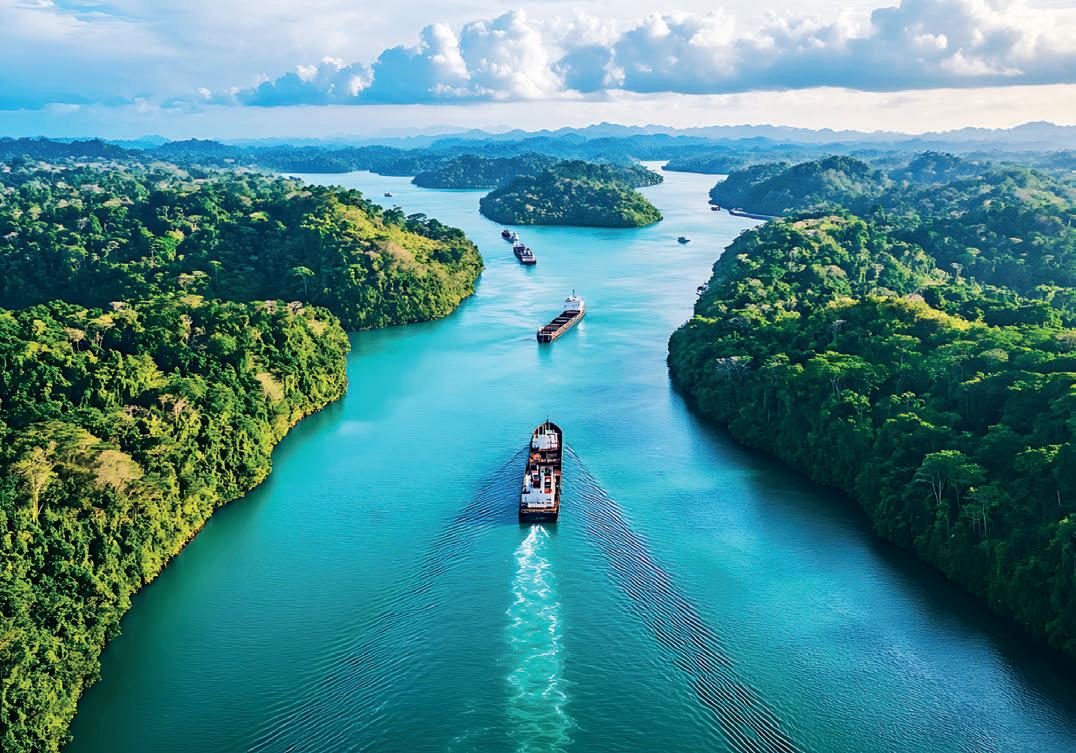

ere was also concern that China could obtain intelligence on US shipping, naval routes and various shipments with such a strong in uence in the Canal.
It is clear that China has established establish economic relations with many Latin American countries, including Panama, particularly through its adventurous Belt and Road Initiative - a global infrastructure strategy started in 2013, where China seeks to invest in more than 150 countries and international organisations.
In early 2024, more than 140 countries had joined BRI, which accounted for close to three-quarters of the world’s population and more than half of the world’s GDP.
As a result of such assertive growth strategies, China has become South America’s top trading partner.
In Panama, China invested $1.4 billion USD (€1.2 billion) in 2023, quadrupling its investment there since 2017. In addition, shipping to or from China accounted for 21 per cent of the cargo going through the Canal, from October 2023 to September 2024.
Chinese companies are also investing heavily in infrastructure projects in and around Panama itself. A new fourth bridge, connecting Panama City to West Panama, worth approximately $1.42 billion USD (€1.25 billion) is under way, as well as the Amador Cruise Terminal on the Canal’s Paci c side and an extension to the Panama City Metro.
Notwithstanding such investment, the US is still Panama’s largest investor and prime user of the Panama Canal, with a yearly foreign direct investment in Panama is close to $4 billion USD (€3.5 billion).
Hence, its in uence in the strategic nation remains highly signi cant in a period of economic and geopolitical turbulence.
China’s FDI was just under one percent in 2023, covering logistics, construction, infrastructure and energy; compared to almost 20 percent FDI by the US.
Despite having close economic arrangements with the Chinese, the Panamanian government has denied any under-handed arrangements, or control by Chinese operatives.
Panamanian President José Raúl Mulino has denied any Chinese involvement in operating the Canal while also rejecting Donald Trump’s claims to reclaim it.
However, President Mulino still sees the value of American naval and commercial support in the Canal, as evidenced by US military personnel at three local bases, while the US view it as a strategic asset economically and for security purposes.
future con ict in Asia, enabling fast transit from the Atlantic to the Paci c Ocean.
• China cargo (Oct 2023 – Sept 2024) = 46 million tonnes Map
e US sees the Panama Canal is critical for the passage of its warships during any
e US’s recent actions and claims over the Canal have been seen as part of its strategy to reduce China’s sphere of in uence in the region.
is was evident when Panama announced, in February 2025, that it would formally exit from China’s BRI.
ere is also controversy over CK Hutchison Port Holdings’ proposed sale of its port interests in the region.
e company is a Hong Kong-based shipping conglomerate that operates major ports at both entrances to the Canal.
It is a leading global port investor, with more than 50 ports around the world and has operated the Ports of Balboa and Cristobal, respectively situated at the Paci c and Atlantic ends of the Panama Canal, since 1997.
Its $22.8 billion USD (€19.9 billion) agreement with the BlackRock-TiL Consortium to sell a 90 per cent interest in the Balboa and Cristobal ports, caused an uproar in China, leading to a diplomatic stand-o with the US.
A stalemate developed when the deal didn’t proceed in early April 2025. However, in midMay 2025, CK Hutchison announced at its AGM that the Aponte family-operated MSC (Mediterranean Shipping Company) is the
• Built and operated by US
• Opened in 1914
• Returned to Panama in 1999
• Approx. $5 billion USD pro ts (2024)
• 3-6 per cent of Panama GDP
• Approx. 13,000 supersized ships (2024)
• 5-7 per cent of global trade
• 40 per cent of US container tra c
• US investment (2023) = $4.5 billion USD
• China investment (2023) = $1.4 billion USD
• US cargo (Oct 2023 – Sept 2024) = 163 million tonnes

primary investor in a consortium looking to purchase its 43 ports around the globe.
Apart from Panama leaving China’s BRI , there are more signs of waning Chinese in uence in the Latin American country, with some estimates saying that about half of the Chinese-funded projects in Panama have been stopped since it le the BRI.
Panamanian authorities have shuttered a number of Chinese-led projects, including shelved several other high-pro le Chineseled projects, a development of a port on Isla Margarita, as well as a high-speed rail link from Panama City to the city of David.
e Panama Canal now clearly stands as a pawn in a tug-of-war between the US and China, as the US tries to limit China’s in uence in the region while China seeks to consolidate and even remain relevant to Latin America.
is is occurring at a time of increasing uncertainty revolving around it and the two other key shipping routes around the world – the Suez Canal and Strait of Hormuz.
Despite the posturing, allegations and trade escalations between the US and Chinese governments, the future of the Panama Canal seems assured, provided the trade route remains viable for industries and governments.
In the absence of an alternate shipping route being created, at a potential cost of $6 billion USD (€5.3 billion) or more, it is apparent the Panama Canal will remain of signi cant geo-strategic importance for years to come.
ere is also the issue of supply of fresh water for inhabitants in the region, as well as for use in the Canal’s locks.
is may prove to be more of a pressing issue than trade relations between the two global economies.
e ‘Big Ditch’ will continue to hold its paramount position as a conduit between the US, South America and the Asia Paci c, linking the two great oceans and the nations that depend on sea transport.
It will also be a critical route by which China can maintain regional economic and political links.
While its waters ow and container ships continue to ply their trade, this liquid gold will remain the centrepiece of the global economy.
However, as nations and corporations continue to utilise its waters for commerce and industry, the stretch of water will continue to be dogged with controversy, as it has since the rst vessels crossed its waters in 1914.
www.globaltrailermag.com


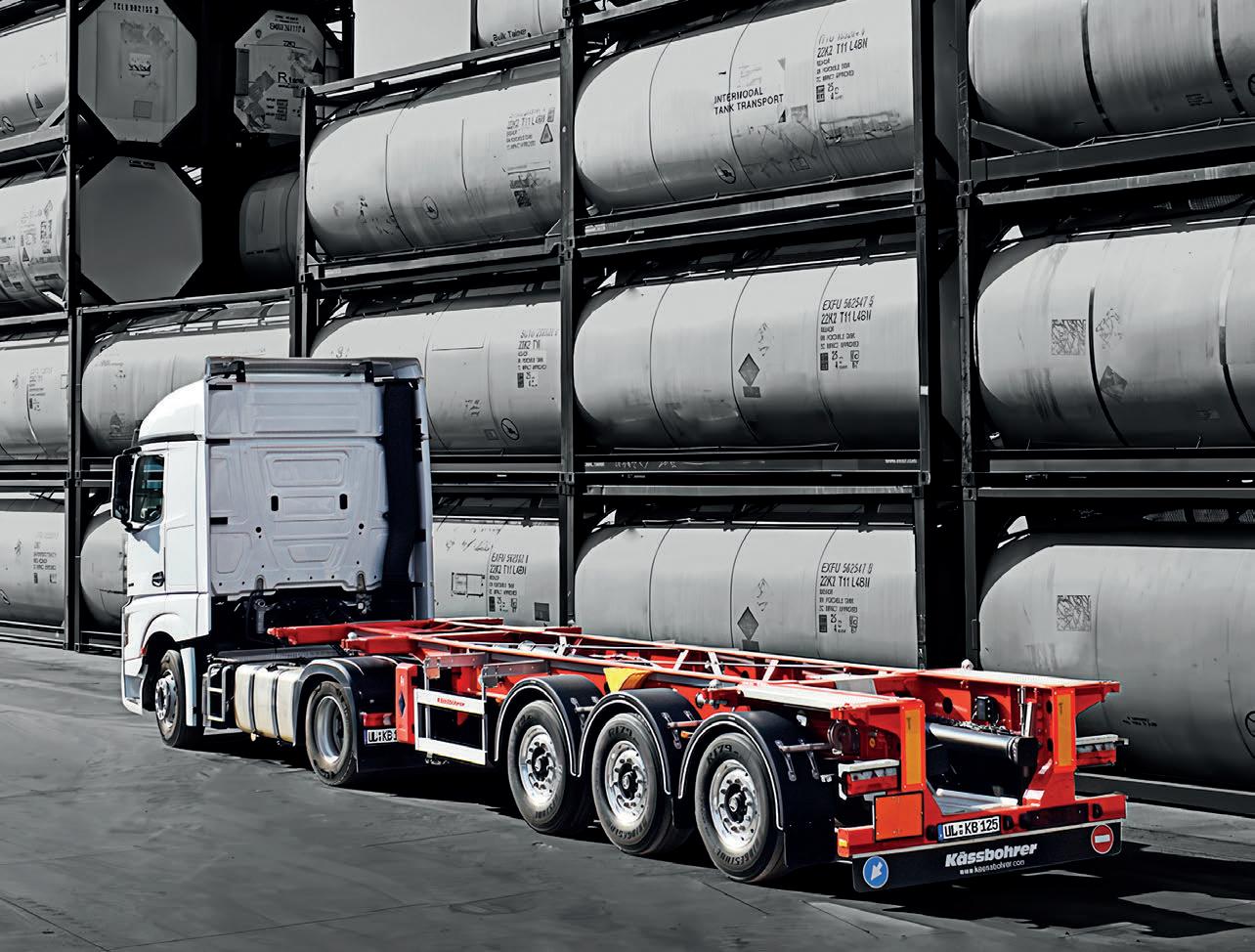
BILLED AS THE WORLD’S LEADING TRADE FAIR FOR LOGISTICS, MOBILITY, IT AND SUPPLY CHAIN MANAGEMENT, TRANSPORT LOGISTIC 2025 DIDN’T DISAPPOINT.
From 2-5 June 2025, about 2,500 exhibitors from more than 70 countries showcased their solutions and products at Messe München’s 150,000 square meters of exhibition space, which included 12 halls and an outdoor area with track areas.
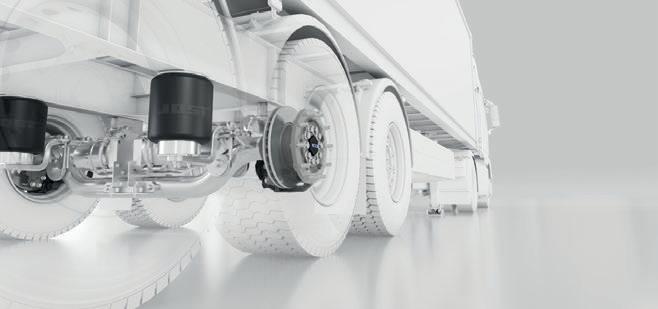
In addition, approximately 150 specialist events were convened during the four-day event on topics from logistics, mobility, IT and supply chain management.
Specific topics included sustainability, stakeholder cooperation, latest developments, AI, cybersecurity, infrastructure and human capital in the industry, re ecting that markets and technologies are changing rapidly due to factors, such as geopolitics, digitalisation and sustainability.
e eld of logistics saw discussion points, such as ‘Global supply chains in transition’, ‘My Nation First – Antiglobalisation, trade wars, hot wars’ and ‘Future of Air Freight and Freighters’.
Other subjects relevant to the current logistics industry included discussions and panels on the continuing wave of insolvencies in transport SMEs and ‘How freight forwarders are mastering change’.
ese saw participation by key players from


business and research, including major brands such as IKEA, Alfred Kärcher, Andreas Schmid Logistik and VDO/Continental.
A major discussion point related to the digitalisation of the transport and logistics industries, as stakeholders across all modes of those markets continually seek to achieve maximum e ciency with minimum emissions.
AI was a hot topic of discussion among delegates, as they considered its application scenarios and its ubiquity.
e well-attended discussion on ‘Cybersecurity in logistics: How supply chains remain secure in the digital age’ revealed some major issues for logistics companies around the globe.
The all-important topic of sustainability across many industries was raised through various avenues, including research projects, electric mobility, ESG, emission calculations, and technologies and applications.
e last day of the trade fair was dedicated to HR topics, featuring interactive four-hour sessions focused on employer branding, developments in the world of work with a focus on women.
Delegates also examined the best strategies to combat the shortage of trainees and skilled workers, tackling the shortage of professional drivers and how to motivate drivers.
At this year’s trade fair, JOST, for the rst time, presented its KKS solution for on-yard use with the specially developed JSK80 – a major step forward in automation and e ciency.
The global supplier of safety-critical commercial vehicle systems is continuously
improving its KKS automatic coupling system. Already across road and refrigerated transport JOST is now expanding its application to yard logistics.
e JOST KKS aims to set new benchmarks for performance and reliability in the transportation industry.
e KKS enables drivers to couple and uncouple semi-trailers via remote control without leaving the driver’s cabin, automatically, safely and quickly.
e driver is guided through the entire coupling process, with sensor technology providing live information on the KKS remote control throughout every step of the process.
Time, comfort and safety gains are made possible with just one product.
“With the KKS Terminal Tractor JSK80, we are enabling fully autonomous and hands-free coupling in distribution yards and port terminals,” said JOST Head of Sales Trailer Europe, Dietmar Franke.
“ is is a game changer for modern logistics – e cient, safe, and a key solution for tackling logistics challenges like the ongoing driver shortage.
“Additionally, we are proud to contribute to emissions reduction through innovations, such as our e-axle, which supports sustainable resource management.
“Our mission is to support technological change towards better connected, environmentally friendly and intelligent commercial vehicles – on the road with tomorrow’s technology.”
In addition to the live demonstrations of the JOST KKS system at its stand, visitors also witnessed the automatic coupling process in action every day at the Transport Logistics outdoor area.
German trailer OEM, Kässbohrer showcased prime examples of its ‘Enginuity’ (Engineering and Ingenuity) at Transport Logistic, as part of its 360-degree portfolio.
e range of Kässbohrer commercial transport vehicles on display included general cargo to bulk and liquid goods transporters, as well as intermodal, heavy and abnormal goods carriers.
Showcased vehicles included Kässbohrer’s longer and higher capacity (SEC) curtainsider, box, container chassis combinations, its award-winning light-weight intermodal product range and its electri ed cold chain vehicles.
A highlight was the award winning Kässbohrer Octagon-on central frame chassis design, which won a Trailer Innovation award (Chassis category).
Kässbohrer also presented Europe’s lightest 20 tank container chassis, manufactured with S 700 MC steel.
Kässbohrer’s next generation electri ed K.SRI E reefer, equipped with BPW and ermo King refrigeration units, showcased the company’s emphasis on green technologies and sustainable practices.
e e-Reefer technology enables fuel savings of up to 4,000 litres annually, reducing CO2 emissions by up to 10 tonnes, the company said.
Kässbohrer is making a big push into the electric trailer market, utilising the EUfunded ZEFES (zero emissions) project.
It is developing the e-curtainsider powered by a ZF recuperation axle system that provides traction support for both combustion engines and electric trucks.
Transport Logistic 2025 also saw the unveiling of the new standardised Wielton EVO curtainsider semi-trailer, together with Wielton’s Langendorf-branded Flexliner SDT double-deck inloader, as well as its Aberg Service, Aberg Connect and ReTrailer solutions.
Wielton Group CEO, Paweł Szataniak said Transport Logistic was a valuable opportunity to showcase its latest innovations in road transport to a broad professional audience.
“We are also gaining insight into the evolving needs and challenges faced by transport companies,” said Szataniak.
“ e Wielton Group o ers more than just a wide range of semi-trailers, trailers, and truck bodies – it delivers a comprehensive ecosystem of solutions.”


Paweł Szataniak said Wielton’s ecosystem included proprietary telematics, TPMS systems and an expanding suite of vehicle services.
“As part of our growth strategy, we have recently enhanced our o ering with factoryrefurbished semi-trailers and launched the standardised Wielton EVO curtainsider,” he said.
“Combined with a digital purchasing platform and intelligent service package, it forms an integrated ecosystem that delivers e ciency, quality, and innovation in one complete solution.”
e Transmec Group showcased its latest developments in transport and logistics at the Munich event.
Its spotlight was on the Group’s ecosystem, which includes 800,000 sq metres of warehouses and yards across eight European countries, while it showcased its foray into innovations, with Transmec’s newly inaugurated robotic area.
In the lead-up to Transport Logistic, the organisers conducted a far-reaching survey of 1,851 exhibitors and visitors as to their views on the current state of the logistics industry.
Topics covered by the survey included cost pressure and bureaucratic hurdles, shortage of skilled workers, emissions and cyber-attacks.
Furthermore, nine out of ten respondents said they were con dent about the future of trade and the industry in general.
Despite the conditions, the exhibitors and visitors surveyed tend to be optimistic overall. One in two (52 per cent) expect the market situation to improve in the next two years. Germany (46 per cent) is somewhat more cautious than other countries (60 per cent), while Asians (80 per cent) are particularly con dent.
www.transportlogistic.de

We stand right in the middle of every project realization.

HIGH QUALITY GRP FOR COMMERCIAL VEHICLES.
KRONE TRAILERS’ PROVEN TRACK RECORD OF SUCCESSFUL INNOVATIONS IS DUE TO ITS LONG-HELD VALUES OF EXEMPLARY PRODUCT QUALITY AT A FAIR PRICE, INNOVATIVE PROWESS, A SERVICE PROVIDER MENTALITY AND PROXIMITY TO ITS CUSTOMERS.
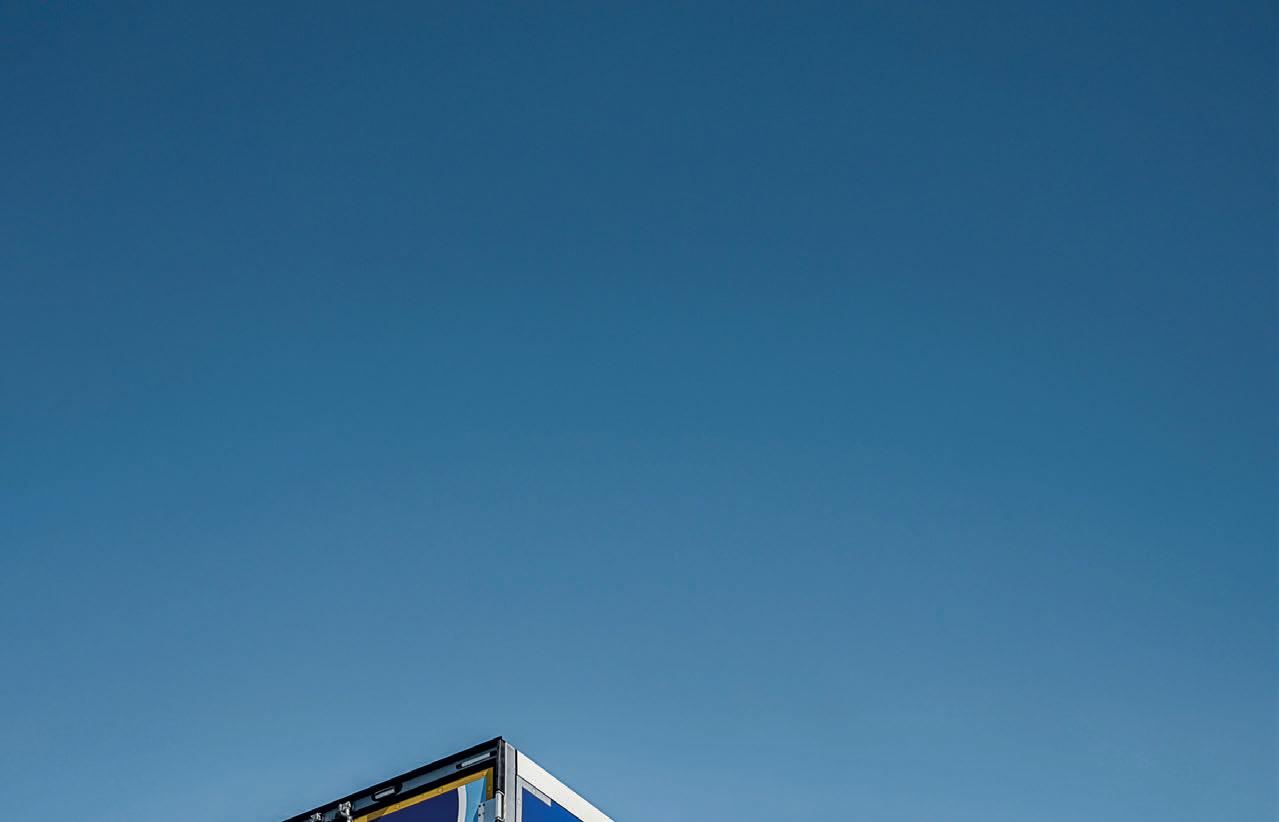


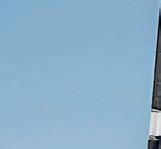









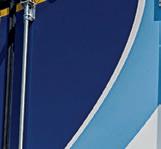


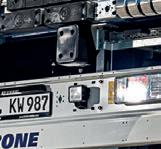


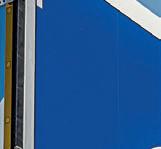



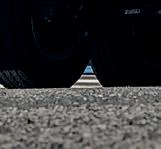


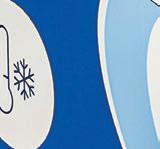




In a constantly evolving globalised economy, Krone is something of an anomaly. A rare breed among multinationals.
A er 119 years of operation, Krone is still owned and operated by the Krone family, with the corporate entity Bernard Krone Holding SE & Co. KG, the parent company of the Krone Group. The family business, with interests in electri ed and refrigerated trailers, semi-trailer combinations, axles, agricultural harvesting equipment and more, is currently under the stewardship of the fourth generation of Krones.














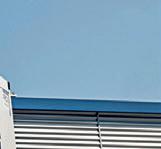



It is truly a family concern, with four generations of ‘Bernard Krones’ having been at the company’s helm throughout its rich history.
e latest iteration was in 2010 when Dr Bernard Krone handed over the management of the company to his son Bernard.
While it has modernised over the decades, embracing up-to-date technological advances, Krone is still intrinsically bound to its agricultural roots, harking back to the days of the early 1900s when it started out as a smithy’s workshop in Spelle, tucked away in Germany’s Lower Saxony farming region, near the Dutch border.
It was borne of an era when a man’s word was his bond and customer satisfaction was paramount, providing a quality product for a fair price.
e edgling company was forged on the ‘olde world’ values of taking care of the customer, the employee, the company – values, which today, are still rmly embedded in the Krone DNA.
At the turn of the 20th century, founder Bernard Krone understood that to adhere to these values, while maintaining a healthy business that meets customers’ needs, you had to adapt with the times. at meant innovating.
e ethos of ‘tradition meets innovation’ is still practised today.
e company’s dedication to innovating to meet customers’ needs, and to be ahead of the curve, has manifested itself throughout Krone’s history.
Krone developed agricultural trailers in 1948 to meet the demands of the burgeoning agricultural sector, with which the company had close links.
Its steady growth saw Krone develop its rst coil liner trailer in 1973, tted with a special trough for the safe transport of steel rolls. is was followed in 1981, when Krone developed the short coupling that signi cantly increased transport capacities, and a rst for Krone when, in 1990, it launched its Mega Trailer with a clear internal height of 3,000mm.
More innovations were to come, with it being the world’s rst trailer manufacturer in 1997 to introduce cathodic dip coating plus powder processing for long-term rust protection.
e 2000s saw Krone advance R&D endeavours in sustainable practices, acknowledging its historic ties to the agriculture sector of northwest Germany.

e decade resulted in Krone setting new standards for the transport industry with innovations such as its Safe Liner, the fuel-e cient, long-distance goods transporter, the Euro Combi (2004), the aerodynamic Pro Liner ECO semitrailer (2008) that reduced fuel consumption and CO2 emissions.
ese were followed by Krone’s Aero Liner project study in 2012, where it explored developments in energy-e cient trailers, and the Krone Surface Centre in 2018.
e company’s growth stemming from its innovations, saw it undertake a number of mergers and acquisitions between 2013 and 2019, expanding its base as a trailer OEM and industry innovator.
e adherence to R&D saw it open its Krone Validation Centre Future Lab in Lingen in 2021, followed the next year by the development of its innovative Krone e-Trailer, equipped with powerful electric axles that allow for CO2 emissions to be reduced by 20 to 40 per cent.
e company’s laser focus on improving products for customer bene t has extended to the development, manufacture and sales of commercial vehicles, where it has implemented a certi ed environmental management system.
is system ensures that emissions, noise and odours are reduced, while the company minimises the amount of waste produced, and water used.
at wholehearted dedication to customers, employees and innovation, while maintaining strong bonds with the local community, has seen Krone steadily grow over the past century to where it has generated revenue of more than €1 billion.
Krone’s most recent innovation endeavours have been in the high-demand sector of cold chain or refrigerated logistics.
It’s a natural progression for the company that already delivers to the market refrigerated trailer options.
Markets are forecasting that the global cold logistics industry will grow to be worth about $372 billion USD (€344 billion) by 2029 – a growth rate of almost 11 per cent.
In keeping with its mantra to create innovations that e ciently answer customer needs, Krone has developed its new electri ed ‘Cool Liner’ transport cooler that


combines e ciency, exibility and sustainability.
With its new product, Krone is addressing the conundrum faced by refrigerated logistics – transporting sensitive goods, such as food or medicines, under precisely controlled conditions, while using energy-e cient and environmentally friendly solutions.
An unstable cold chain can lead to a loss of quality and resultant nancial losses, while rising energy costs and stricter environmental regulations place additional demands on transport companies.
With greater controls and legislative requirements relating to CO2 emissions, hauliers need to embrace solutions that combine environmental friendliness with economic e ciency.
Krone has met the multi-challenges of energy and economic e ciencies and precise temperature control head on, culminating in

refrigerated logistics latest o ering – the Cool Liner, a combination of cutting-edge technology and exibility.
With its continuous chassis, the Krone Cool Liner o ers a particularly stable chassis that forms the basis for a sustainably e cient vehicle. e optimised insulation of the body not only reduces ongoing energy costs, but also makes an important contribution to sustainability in logistics.
Modern sensor technology and intelligent control systems ensure that the temperature in the cargo area remains constant. is means that the temperature relevant to the respective product remains within a selected interval at all times and the cold chain is maintained - a decisive factor for food safety.
e Cool Liner not only sets standards in energy e ciency, but its exibility also makes it a versatile solution for di erent transport requirements.
“QUALITY AND INNOVATION HAVE BEEN THE FOCUS OF OUR CORPORATE PHILOSOPHY FOR OVER 110 YEARS. WE ALWAYS FOCUS ON ROBUST, PRACTICAL AND EFFICIENT FEATURES OF OUR PRODUCT LINES.”
BERNARD KRONE, KRONE SUPERVISORY BOARD CHAIRMAN
e model variations range from the Cool Liner Multitemp, which enables di erent temperature zones, to the Cool Liner Doppelstock, which enables twice the pallet volume to be loaded.
ere is also the Cool Liner Meathang, which was specially designed for hanging meat transport.
In developing its electri ed and supremely sustainable Cool Liner, Krone has partnered with an established leader in refrigerated transport solutions – ermo King – to create a solution for multiple transport operations.
In combination with ermo King’s AxlePower, Krone is able to o er customers the Cool Liner as a pioneering, emission-free refrigerated transport solution.
Crucially, the all-electric ermo King Advancer A-500e refrigeration unit is supplied with energy via a recuperating BPW-ePower generator axle and the ermo King EnergE Pack.
e energy generated during braking and rolling feeds the battery pack mounted under the body, which ensures cooling operation while travelling and when stationary.
A major advantage of this system is that the refrigeration unit emits neither CO2 nor particulate matter emissions.
It also operates much more quietly than conventional diesel units – a crucial advantage for night-time deliveries in residential areas.
In addition, the arrangement of the battery pack ensures a more even weight distribution, which reduces the risk of overcharging the drive axle when partially loaded. anks to a type 2 charging socket, the battery pack can also be charged externally, and the unit can be operated via a 400V shore power supply.
With the refrigeration logistics sector constantly growing and evolving globally, Krone is not resting on its laurels when it comes to innovations in this eld.
It fully recognises that, in addition to ensuring an unbroken cold chain, environmental and e ciency issues are also playing an increasingly important role.
With its environmental credentials clearly evident, Krone has addressed the sector with its technologically advanced Cool Liner with ermo King AxlePower, thus that sustainable approaches are already practicable today.
e family-run company with traditional business values is fully cognisant of the trend towards emission-free transport and optimised energy e ciency continuing and expanding, providing new impetus and opportunities for the market that thrives on innovation.
e Cool Liner is another, very current, example of Krone’s mantra for success – to provide exemplary products at a fair price, coupled with innovative prowess, a service provider mentality and attention to the customers.
www.krone-trailer.com
WITH THE HOT-BUTTON ISSUE OF SUSTAINABILITY HEAVILY IMPACTING THE COMMERCIAL TRANSPORT INDUSTRY, OPERATORS NEED TO STRIKE WHILE THE IRON IS HOT WITH TECHNOLOGY.
TIP Group’s VP Central Region and lead, energy transition strategy workstream, Oliver Bange.

There’s no time like the present. One cannot sit on one’s hands.
Market leader in truck and trailer leasing and rental solutions, TIP Group is taking a ‘no time to wait’ approach when it comes to testing and adopting sustainable technologies.
TIP Group Vice President, Central Region, Oliver Bange, said it’s vital for companies to be early adopters of sustainability strategies.
Bange, who is the lead of TIP Group’s energy transition workstream during the development of its 2030 strategy, said companies faced huge risks in waiting too long to start testing new strategies.
“ e transport and logistics sector is at a critical juncture,” said Bange.
“With sustainability demands mounting and emission regulations tightening, companies are under pressure to rethink their eets.
“But for many, a lingering uncertainty over which green technologies will dominate, and the risk associated with making the wrong decision, is holding them back.”
He added it is a mistake to wait too long to nd out what the ‘winning technology’ was before testing options.
With a plethora of governmental regulations about CO2 emissions, electri cation, changing government subsidies, and di erent technological advances in battery-electric, hydrogen, gaspowered vehicles, the current transport landscape is full of variables that companies nd di cult to address.
TIP takes the viewpoint that although going with the wrong solution can result in stranded investments, underutilised assets, or compliance risks, standing still is equally dangerous.
“ ere’s no one winning technology yet, and it might stay that way,” said Bange.



“Gas, battery-electric, hydrogen – they all have potential. It really depends on customers’ network, goals, local legislation, and operational context.
“What works well for urban distribution in the Netherlands, for example, might not work for long-haul operations in Eastern Europe.
“Every geography, every use case has di erent requirements.”
Bange said the right approach for companies is to test di erent solutions that will suit their capabilities and needs.
“It’s not about waiting until a clear winner emerges. It’s about understanding which technology ts where and starting to build experience with it.”
Bange added that, ultimately, it’s about the full ecosystem for each business – the infrastructure, policy, operations and people.
Hence, TIP has grasped the concept of being an early adopter of technology to reap the bene ts.
“ ey’re (early adopters) winning new business, steadily increasing the share of greener technology in their eets – and even their drivers are on board,” said Bange.
“Everyone was saying the drivers would be reluctant to embrace electric powered equipment. Our experience is actually the opposite.
“Drivers are excited to operate new equipment. It adds a sense of pride and modernity. “ ey feel they’re part of something important.”
As a result, the early adopters are becoming more e cient and are playing important roles in shaping the direction of the commercial transport market.
Bange said there was an immediate upside to this ahead-of-the-curve strategy.
“If you can show that you’re running these new technologies successfully, you’re seen as credible ... you get more RFQs, and you’re not just responding to tenders, you’re in uencing how they’re written,” he said.
“Your experience becomes a reference. You’ve tested it. You’ve got the data. And it works. at shi s the whole conversation.
“It’s not just about ticking a sustainability box, it’s about positioning your business for growth and long-term relevance in a changing market.”
Another win for the early adopters is deeper relationships with key value chain partners, shaping the development of new vehicles and digital platforms. ey become transport in uencers.
In its studies into sustainability, TIP has seen that it’s vital for stakeholders to not only discuss issues of propulsion (power), but also what trucks haul.
“We always talk about new technologies and energy sources for the vehicle itself, but the trailer side is just as important when you want to look at the full sustainability picture,” Bange said.
“Sustainability must also come from smarter use of existing equipment – refurbishing assets and extending their lifecycle is a huge lever.”
He said the old approach of buying new vehicles was not fully sustainable, with refurbishment of vehicles providing signi cant CO2 and nancial savings.
Another phase of sustainability that the TIP Group has agged as having signi cant impact on the industry is that of data and digitisation.
Utilising telematics and smart monitoring systems, companies can gain greater control over trailer and truck utilisation, performance, and maintenance, TIP has found.
Such systems help make equipment smarter, enabling predictive maintenance, minimising downtime, and improving operational e ciency.
With data, TIP is a rm advocate of using existing assets more intelligently and e ciently.
TIP reports that AI can be deployed in ensuring load optimisation, through planning, routing, distribution.
“ ere is so much potential in making sure trucks and trailers are fully loaded in the smartest possible way,” said Bange.
“If we can improve even a few percentage points, that means fewer trips, less fuel, and lower emissions.
“It’s an area where there’s still a lot to gain, and we need to pay more attention to it if we’re serious about sustainability.”
For transport companies that worry about tipping huge sums into changing their operations, TIP believes the simplest way is to start small with piecemeal or pilot programmes and test how small changes can be adopted for greater e ciencies.
Companies can also partner with TIP Group to reduce their risks, as TIP o er the exibility of several con gurations, like several types of electric reefers, so customers can choose what works best for them.
TIP’s manufacturer-neutral business model also assists customers who don’t want to commit to long-term ownership of trucks and trailers.
With issues surrounding sustainability constantly evolving, TIP’s advice to commercial transport operators is to start small and then build but start now.
“ e infrastructure isn’t fully ready, the tech is still evolving, the legislation is still changing,” said Bange.
“But that’s precisely why you need to test, learn, and adapt now, because the longer you wait, the less prepared you’ll be when we get to the tipping point.”
www.tip-group.com
GROUP
EXPANDED
As one of the top three manufacturers of semi-trailers, trailers and rigid bodies in Europe, and a top ten manufacturer in the industry, big innovations in a constantly evolving eld come naturally to the Wielton Group.
Relying on its core value of initiative, the company actively searches for modern solutions to the industry, enabling it leading it to seek out new opportunities for development.
With its adherence to quality, Wielton ensures it implements the best solutions across the entire organisation, resulting in the most e ective organisational and technological practices and highest quality product.
Combining its initiative and quality strategies, the Wielton Group is rede ning its approach to economic transport by introducing the Wielton EVO universal standardised curtainsider semi-trailer, which has been designed with maximum functionality and e ciency in mind, without compromising on quality.
It is a direct response to the changing needs of the industry – both in terms of operating costs and modern tools supporting eet management.
Hence, the Wielton EVO is a modern, integrated solution that combines a highquality curtain-sided semi-trailer, a digital purchasing platform, and a package of intelligent services into one coherent ecosystem.
Uniquely, the Wielton EVO curtain-sided semitrailer is complemented by a digital e-commerce purchasing platform, thanks to which the entire purchasing process –from con guration, through leasing, to signing the contract – can take place entirely online, from anywhere and at any time.
is innovative feature o ers a suite of intelligent services in one cohesive ecosystem – a one-stop-shop for purchasing.
e EVO’s design features include a high-strength, weight-optimised steel frame, which has been protected against corrosion using cataphoresis technology, together with lightweight and durable aluminium doors and headboard, an Edscha folding roof and axles made by BPW.
e EVO is XL-certi ed with a beverage allowance, as well as tted with a rst li axle.
e approach is to provide a well-tailored standard, universal trailer weighing only 5.6 tonnes with a cargo space for 34 pallets.
In addition, the vehicle is equipped with a set of ferry mounts.

Wielton EVO
Trailer weight: 5,600kg
Internal height: 2,725mm
Neck height: 120mm
Saddle height: 1,120mm
Total height: 4,000mm
Overall width: 2,550mm
Total length: 13,882mm
Price: €21,990 net
All this for a standard price of €21,990 (at the time of writing), with purchases facilitated through a simple online purchasing process.
One click leads to the purchase, nancing, service, and parts.
“We have created an ecosystem that integrates what is most important: the vehicle, purchases, nancing and a er-sales care into one simple and fast experience,” said Wielton Group President of the Management Board, Paweł Szataniak.
“Just as a smartphone user expects uidity, consistency and availability – so does the Wielton EVO.
“It is a well-thought-out, structured range of new-generation transport services. Moreover, thanks to the standardisation and automation of production, we can quickly deliver a highquality vehicle that is also very cost-e ective.
“I am very proud to nally present the results of our many months of hard work.”
In designing the EVO, the Wielton team thought of all potential uses and eventualities, resulting in it providing access to a package of services supporting the operation of the vehicle. ese include tailor-made telematics from Aberg Connect with remote diagnostics, extended warranty and 24/7 parts availability.
Customers can also expand the semi-trailer with available accessories, creating a solution tailored to speci c operational needs.
e Wielton Group’s expanded network means that the EVO can call on its service network of more than 500 partners in 30 countries.
e manufacturing process for the Wielton EVO comprises a three-stage function, including automated laser welding, anticorrosion cataphoresis (KTL) coating, and hydroforming of steel.
e Wielton marque fully utilises modern technology to shape metals and uid spray in a precise and highly e cient process. is approach includes monitoring the EVO trailers using telematics, constantly analysing its technical condition, and identifying its location or any issues.
Wielton’s telematics system uses EBS and TPMS data necessary for quick response and repair, and servicing of the trailers.
At Wielton, they don’t regard the EVO curtainsider as just a product.
It is an entire philosophy of approaching transport – in which standardisation does not mean limitation, but optimisation; and digitalisation evokes convenience, speed and greater control.
“EVO means savings, but also quality and access to intelligent tools without additional effort – in one place and immediately,” said Wielton EVO Managing Director, Karol Kostrzewa.
“ is is our step towards modern, automated transport available to every carrier.”
EVO quality is Wielton quality – a 10-year
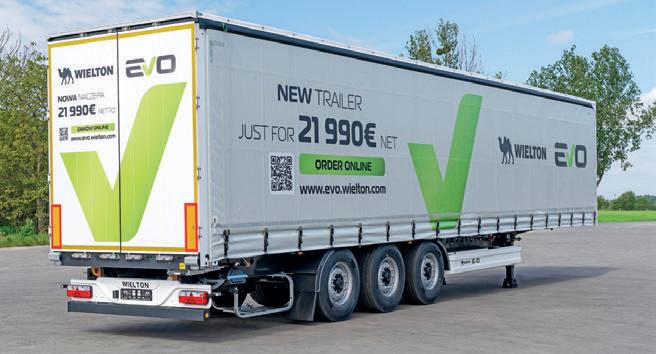
warranty on frame perforation and a two-year warranty on the entire trailer.
e Wielton EVO made its public event debut at the Transport Logistic 2025 trade fair, held in Munich from June 2-5, 2025.
With 29 years in the industry, the Wielton Group showcased an impressive range of its innovative truck and trailer products during the four-day fair.
In addition to the new standardised EVO curtainsider semi-trailer, Wielton also showcased its Langendorf-branded Flexliner SDT double-deck inloader, together with its Aberg Service, Aberg Connect and ReTrailer solutions and o ers.
e Langendorf double-deck inloader Flexliner SDT is designed for transporting dry freight. While complying with legal vehicle length regulations, the three-axle trailer can transport up to 54 Euro pallets or up to 87 roll containers (820mm x 720mm). is represents up to 66 per cent more cargo volume and 40 per cent less CO2 emissions compared to a standard trailer.
It also features a xed intermediate oor and is compatible with a two-axle tractor unit, and its core structure is a welded frame made of high-quality ne-grain steels, reinforced and welded in high-stress areas.
Due to the Langendorf’s independent wheel suspension, a continuous axle beam is not required, which allows for a usable internal height of up to 3,700mm.
e oor and intermediate oor are made of 45 mm thick, slip-resistant, and quietrunning aluminium, while the front wall, side panels, and roof of the dry freight box body are constructed from 25mm thick GRP panels.
e rear features a Dhollandia DH-VH vertical hydraulic li , model VJH32, with a li ing capacity of 3,000kg. It is equipped with a safety railing and a remote control for li ing, lowering, opening, and closing.
Due to the Wielton Group’s approach to creating modern, innovative solutions, coupled with dynamic action to meet industry and customer needs, its products are sold in 35 countries in Europe, Asia and Africa.
More than 75,000 trailers and semi-trailers with the Wielton logo have already hit the roads, serving customers in the transport, construction, production, distribution and agricultural sectors.
It has forged strong trailer building partnerships with Langendorf in Germany, Fruehauf in France, Lawrence David in the UK, Viberti in Italy and Guillés in Spain. More than 3,000 people are employed within the Wielton Group, including 300 engineers and constructors, who optimise the manufacturing process and introduce the latest technologies.
www.wieltongroup.com
From the worlds of entertainment, food and pharmaceuticals to energy and telecommunications, mergers and acquisitions have seen behemoths forging partnerships that alter their respective industries.
When JOST Werke SE, a leading producer of safety-critical systems in the commercial vehicle industry, acquired Hyva, a renowned global technology leader in hydraulics, in February 2025 it was a natural t for the companies’ future directions.
JOST is a household name in Europe’s and the Americas’ commercial vehicle industries, while Hyva has a strongly established foothold across Asia, supplying vehicle hydraulics and tipping mechanisms.
Together, they will draw on each other’s market presence, product range and industry expertise, as one combined force.
JOST CEO, Joachim Dürr, said the merging of the two companies has created a commercial vehicle “powerhouse” demonstrating their combined strengths.
“ e merger has been received very well by our customers, and it brings us towards the vision of being more relevant for our customers and more relevant for our shareholders,” said Dürr.
Hyva CEO, Alex Tan, who is now heading the merged entities’ APAC region, said there were no challenges with the integration, only good synergies.
“ e products are very complimentary to each other,” said Tan.
“JOST is really very strong in highway applications, axles, dri fuels and ohighway applications, like agriculture, construction and mining, so there’s quite a lot of complementary items with each other.”
He added there are “many complementary strengths” of the two companies being brought together, with Hyva bringing its large Asia market footprint with JOST, which is rmly established in Europe and the US.
He also said a shared customer base can bene t from both sets of products, like a one-stop shop, from Hyva’s cylinders, Jost’s h wheel and landing legs and ROCKINGER couplings, as well as Hyva couplings.
While change can be viewed as a disruption in some industry sectors, Tan noted the merger has brought about a change for the better.
“It’s resulted in better service and better synergies for our customers and the two teams, with more opportunities for the employees to grow,” said Tan.
“You have a bigger platform and the company getting bigger the
stronger that gives more confidence to the market.
“We’re combining the strengths of the two brands. It results in a much stronger company and much bigger coverage of our brands.”
Dürr said the paramount issue for the merger was retaining, and building, the trust and con dence of customers and shareholders.
“They (customers) understand that the combination of the two brands and the complementary product portfolio can be a bene t for them,” he said.
“ e merger makes us more relevant to them, and that’s been good to get such positive feedback from the customers.”
e impact of the JOST/Hyva merger is already being seen on the ground, with Dürr reporting a number of gains, particularly in general operations and some quick wins will be in purchasing and logistics.
“We are becoming more relevant for a lot of suppliers and in logistics. We have already





made some improvements in combined logistics, combined sea freight, combined freight,” he said. ere are also areas of collaboration with each other, learning di erent best practices, Dürr noted.
“We see many opportunities to collaborate on R&D,” he said.
“Hyva has a digital cloud platform for digital tipping solutions that we will be able to use for our transport applications, and we will also combine networks.
“We both have specialists and very dedicated plans to produce our products, but on combined processes, like quality, we are collaborating.
“We have one global ‘quality hat’ for all the plans, be it Hyva or JOST, so we are looking for the synergies there and sharing of best practices.
“We’re actually interchanging all the information and taking the best for each market out of the two and bringing them both to the market. We’re bringing the two portfolios together.”
Tan sees the merger as creating a ‘pioneer’ in the commercial transport industry, with the biggest impact of the merger being in the elds of purchasing logistics and manufacturing.
“Manufacturing is like a quality standard and we de nitely can use the best practice from each other’s di erent factories,” said Tan.
“ e strength is in the common knowledge, not necessarily in the process for each production and immediately we are focusing on the customers and how the customer can bene t from this.”
Tan added that the combined forces needed to fully consider the local and regional supply chain arrangements to ensure optimal customer satisfaction with the products.
“WE’RE ACTUALLY INTERCHANGING ALL THE INFORMATION AND TAKING THE BEST FOR EACH MARKET OUT OF THE TWO AND BRINGING THEM BOTH TO THE MARKET. WE’RE BRINGING THE TWO PORTFOLIOS TOGETHER.”
JOACHIM D ÜRR, JOST WERKE CEO
Dürr can see the merged entity being able to take advantage of opportunities in a larger market network that includes North America, China, Indonesia, ailand, Australia and more.
He added that a er merging the companies’ digital teams, JOST will be able to take advantage of Hyva’s digital expertise, including telematics so ware, cloud computing plus coupling systems and towing hitches, while integrating common safety features, such as sensors, into various trucks.
“Hyva has on the digital side more capabilities today because they are one step ahead with a digital tipping system and their cloud solution that’s already in place,” said Dürr.
Tan said a major boon from the merger is the expansion of the companies’ digital platforms, as part of their combined focus on driver safety and eet e ciency.
“Hyva is the only one so far in the whole commercial industry to have this system to have this in trucks worldwide,” said Tan.
“We’ve been investing for more than 10 years, and we have a cloud ready with worldwide coverage, so our products, hardware, sensors and electronics are uploaded and connected to ensure the safety of drivers and e ciencies for our customers are maintained.”
Future planning for the combined entities will see JOST go full steam ahead on its decarbonisation strategies, including the installation of solar panels into all plants worldwide, as well as upgrading the production network and applications.
e reduction of CO2 emissions across the industry will see JOST continue to monitor the situation and work with clients according to Dürr.
He sees the future as bringing greater opportunities for long-term growth of the merged entity, but the immediate focus as they nalise the integration will be on ensuring customer and shareholder satisfaction.
Tan said there is no line in the sand, or magic productivity or pro tability number that needs to be achieved to see 2025 as a success.
“If we can deliver the improvements to our customers that we want to deliver then, then that’s the success,” he said.
“We are providing more strength and more network support to our customers, through a bigger network and platform and bigger production o erings.”
Dürr sees the ideal outcome from the integration being that JOST is “more relevant for our existing customers.”
“We want to improve the service level and be a more important partner for future developments,” he said.
Ultimately, the JOST CEO said that the success of the merger will be highlighted by the people who make up the entity.
“Our people that you see know everything, and they will work with our customers and with the nal eet in the end to nd the best solution on a daily basis,” said Dürr.
www.jost-world.com

INCORPORATING SUSTAINABLE MATERIALS AND INNOVATIVE TECHNOLOGY, ASPÖCK IS SETTING NEW STANDARDS IN VEHICLE LIGHTING WITH ITS LATEST OFFERING.
With almost 50 years of experience in the lighting industry, Aspöck Systems continues its innovative strength and launches the highly developed FlexLED multifunction lamp.
e lighting system is a patented, compact solution for trailers that features a sleek, modern design, simple installation and the highest safety standards. Aspöck has again set the bar high for safety and design in vehicle lighting with the FlexLED ECE lamp.
e multifunctional product is speci cally developed for high mounting on trailers and meets all regulatory requirements of the respective countries and regions in which it is sold.
ese include the beam angle of the light and electromagnetic compatibility.
To ensure maximum quality control, light measurements are carried out exclusively in the Aspöck Group’s test laboratories, while longstanding external partners provide support with EMC testing to ensure the homologation of the light functions.
The new product embraces hi-tech functionality with a slim, symmetrical design, which integrates ashing, position, brake and optional work lights in white.
Featuring a compact design and integrated di user technology, the LED strip o ers excellent visibility and increased safety.
e FlexLED facilitates an easy, user-friendly approach to its installation, such as when using a matching aluminium pro le.
Another highlight is the minimalist cable design with a single-sided cable outlet for all functions, which makes installation even more convenient and turns the product into a true plug-and-play solution.
In addition to the light for trailers, Aspöck also o ers a wide range of FlexLED strips that are characterised by their exibility, robustness and high protection class IP6K9K.
ese are ideal for use on trucks, cars, construction machinery, emergency vehicles, agricultural vehicles, or in the caravan sector.
e white light of the Kelvin strips, in particular, ensures clear and even illumination with reduced glare – ideal for professional applications.
e genesis of Aspöck’s innovative spirit that embodies its approach today in creating new lighting products is borne from a ‘big idea’ to revolutionise vehicle lighting by company founder, Felix Aspöck.
is focus would result in Aspöck Systems producing sophisticated lighting solutions for trucks, trailers, agricultural machinery, special products, commercial vehicles, cars, motorcycles and even caravans.
Any form of road transport, really.
e company proudly proclaims that it can provide the global vehicle industry with individual and innovative solutions, not only for innovative LED lighting, but also for wiring and plug systems.
Today, Aspöck Systems commands 65 per cent of the European car and truck trailer market, making it virtually impossible not to see one of Aspöck’s lighting systems on the road.
roughout its progress the company’s approach to the lighting industry is still based on Felix Aspöck’s “simple” concept – to produce the most complete system of lighting installation.
Today, the company is continually innovating and expanding its range of pioneering lighting and system solutions for vehicles, developing, simulating, implementing and manufacturing LED lighting technology in series, and with customer satisfaction and safety as paramount considerations.
at dedication, under the guidance of Felix Aspöck and his son Karl, Aspöck’s CEO, has seen the company grow exponentially to become a global bellwether in the industry. e company’s growth led to nine expansions at the Austrian headquarters and numerous expansions of the production sites.
It now produces its innovative lighting at three European locations - in Austria, Portugal and Poland, while also having a presence in Brazil.
Aspöck also has eight sales subsidiaries representing its massive lighting product portfolio in Brazil, Germany, England, France, Italy, Sweden, Spain and Turkey.
Working hand-in-hand with the commercial and retail transport sectors has meant that Aspöck needs to pay close attention to sustainability issues when designing lighting products. Its innovations re ect the great importance Aspöck attaches to environmental friendliness – utilising state-of-the-art LED technologies and sustainable plastics to enable resource-saving, lightweight lighting systems.
Bio-based and biodegradable plastics are already in development to further minimise the ecological footprint.
With these innovative solutions, Aspöck is actively contributing to climate change solutions, while o ering customers almost limitless design options in terms of function and design.
www.aspoeck.com
2023/2024 key gures:
• €235 million sales of Aspöck Group
• 1,500 employees worldwide
• €169 million sales at Austria HQ
• 420 employees at Austria HQ
• Reached 94 per cent export quota
• 8 sales sectors - UK, Turkiye, Poland, Italy, France, Germany, Brazil, Northern Europe
• 4 production locations – Portugal, Poland, Brazil and Austria

Aspöck Systems’ FlexLED ECE sets new standards in safety and design. Images: Aspöck.

BRIANZA PLASTICA IS A HEAVYWEIGHT PLAYER IN A LIGHT-WEIGHT INDUSTRY, COMBINING CUSTOMER-FOCUSED FAMILY TRADITIONS WITH INNOVATIVE DESIGN AND MANUFACTURING PROCESSES TO CREATE ITALIAN FIBERGLASS LAMINATE MASTERPIECES.
Tucked between bustling Milan and the idyllic Como in the Lombardy region, Brianza is known as a picturesque pocket of quintessential Italy – rich in history, culture, gastronomy and nature.
While the region is popular with tourists, it o ers a vital commercial aspect to the area, led by a range of family-operated businesses, such as breglass laminates manufacturer Brianza Plastica.
From humble beginnings in 1962 the family business, based at Carate Brianza in Italy’s far north, has steadily grown to become a leader in its eld.
With 63 years of hard work and dedication to its credit, Brianza Plastica now stands atop shoulders, renowned for its product quality and range, use of state-of-the-art technology, reliability of service and customer-centred logistics.
Relying on ve production plants across Italy, Brianza Plastica supplies glass- bre reinforced plastics (GRP) produced both continuously and discontinuously, to a broadbased market, satisfying all customer speci cations and needs.
With customer and industry demands changing with technological innovations, the GRP composite material has replaced aluminium in the manufacture of commercial and recreational vehicles.
GRP’s reduced weight, which translates into improved fuel e ciency and increased payload capacity, is now seen as an excellent long-term solution.
In addition to being lighter, GRP is more exible, enabling it to absorb shocks and vibrations reducing the risk of damage.
GRP is more durable and less prone to degradation, while also resistant to corrosion compared to aluminium, which can corrode over time.
At the forefront of Brianza Plastica’s product design is the ethos of innovating,
developing and testing practical and sustainable solutions suited to customers’ needs.
To achieve this, the company has invested heavily in R&D and innovations.
A few years ago it inaugurated a new laboratory which is three times larger than its predecessor and is equipped with cutting-edge equipment.
In the laboratory, speci c tests are carried out on samples and both incoming raw materials and nished products are chemically analysed.


Armed with its expertise in the production of extruded, expanded polystyrene, and the capabilities of its laboratory at its headquarters, Brianza Plastica is able to conduct tests on sandwich panels and the individual elements making up the panels, on behalf of customers.
Embracing innovation, Brianza Plastica has developed, through its laboratory, a complete family of breglass laminates which responds to the growing market demand for products with improved re performance.
ese cutting-edge breglass laminates comply with a range of strict European and global standards and include the Elycold and Elyplan range.
Elycold is a high-quality breglass laminate, available in widths up to 3,400 mm and thickness from 1-3.6 mm, is produced discontinuously with a polymerisation process at ambient temperature that ensures excellent atness and an extraordinary seamless nish.
Elycold Lite is the ideal solution for those seeking thicker laminate with good rigidity and low speci c weight, while retaining aesthetic values.
e use of resins and speci c microspheres allows increased thickness, without adding weight, decreasing the density of the laminate
and providing greater rigidity, contributing to the atness of the panel and concealing the underlying structures.
Elycold Lite maintains Brianza Plastica’s performance for laminates, being gelcoat resistant to UV rays and to chemical agents. It is ideal for constructing walls of commercial and temperature-controlled vehicles.
Elycold Extra-Glass combines very special characteristics in a single product, such as lightness, given by low speci c weight, and high mechanical strength, due to the high percentage of glass content, meaning it is suitable for vehicles that require high impact resistance, weight saving and high aesthetics.
e Elycold and Elyplan breglass laminates are excellent for the production of panels widely used in the commercial and recreational vehicle sectors and for covering tanks of any size.
ese ranges are extremely durable due to their waterproof status, as well as being UV-light resistance and having long-term durability, low yellowing levels and total impermeability.
eir washable and scratch-resistant surface promises easy maintenance, good quality and nal appearance, while they are available in a range of colours.
Brianza Plastica also bene ts manufacturers by providing a unique solution that drastically reduces installation time.
Brianza Plastica’s success in the marketplace is founded on their priorities of listening to customers and understanding market needs.
To achieve this, it relies on a skilled and widespread commercial team, organised by country regions, to handle each request individually.
Its continued growth saw it open logistics-commercial headquarters in Elkhart, Indiana, in 2014, to service its US market.
While the Brianza Plastica team continues to grow it ensures accessibility and support for customers, through its worldwide network.
As a result, it can spread Italian quality and performance products globally, providing customers the best possible support and attention.
www.brianzaplastica.it/en www. atlaminates.com
ELYPLAN FP400 - Best Fire Performance
Elyplan FP400: Unveiled at Transport Logistic, Elyplan FP400 0.8mm GRP laminate is in class B-s1-d0.
It is Brianza Plastica’s latest product and is best for low thickness and ame-retardant requirements.
Brianza Plastica’s Elyplan range includes:
Elyplan FP220: A 2mm GRP laminate in class B-s1-d0. Pre-treated on the surface to allow customers to apply any type of top coating.
Elyplan FP230: 2mm thick; available in class C-s2-d0.
Elyplan FP230: 1.5mm thick in class D-s2-d0.
These are all categorised in the most advantageous and optimised levels of reaction-tore performance, under international standards UNI EN 13501-1.
Welding is a form of art that literally keeps the transport industry, and countless others, together.
It is crucial in the production of commercial transport vehicles, from cars and trucks to trains and aeroplanes.
Global industries of all descriptions and across all manufacturing sectors, rely on precise welding work.
e quality of an industrial weld directly a ects the durability, safety, and performance of these vehicles.
In the transport industry, manufacturers strive for weight savings in the construction of trucks, trailers and components so as to maximise load carrying ability, as well as optimal performance.
ey therefore use advanced materials and constructions that require precise and high-quality welding techniques, such as advanced aluminium and stainless-steel tanks and high strength steel trailer chassis.
e use of lighter and thinner materials, to reduce weight, while retaining structural integrity, increases the risk of warping, cracking, or incomplete fusion during welding.
In addition, the complexity of various trailer models and variations requires more advanced welding techniques and equipment.
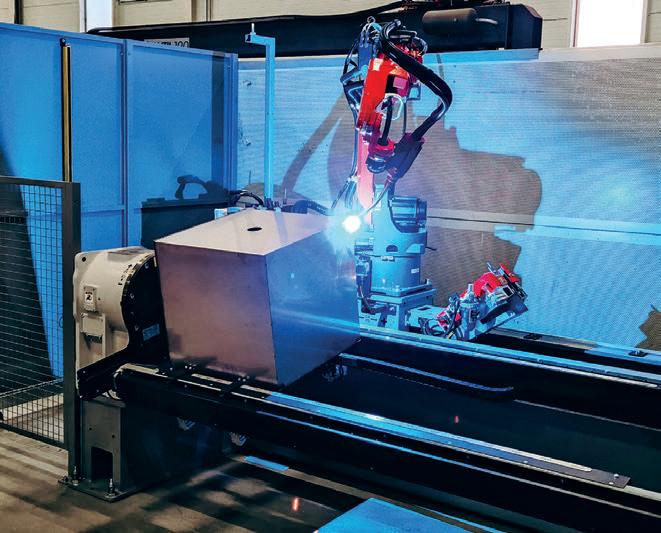
Crucially, any compromise on the quality of the welding can lead to structural de ciencies with potentially catastrophic results.
To achieve high weld quality, innovative solutions are needed that can adapt to changing conditions and ensure consistent quality.
Welding, and associated specialist activities, are in the blood for this three-generation familyowned welding company, based in Alblasserdam, outside Rotterdam.
To ensure that they are at the vanguard of best practices, Valk Welding has maintained a reputation for always looking to innovate in such a high-precision industry.
e creative minds at Valk have proven that the world of welding is a perfect grounding space for a marriage between, robotics and innovation.
It is inevitable that, with the rapid transformation of industry due to the Fourth Industrial Revolution, robotics now play a key role in the fast and e cient production of materials used in the manufacture of truck and trailer components.
Valk Welding has over 60 years’ experience in innovative welding technology.
It has nurtured a well-deserved reputation as a leading supplier of ‘all-in-one’ welding robot systems, incorporating efficient high-mix, low-volume production for the metalworking industry, in both Europe and beyond.
At Valk Welding, they live daily by the credo of ‘the strong connection’, growing to be recognised as a leader in automated welding throughout Europe.
It is not only in the strong welding connections they physically create, but also to its close and longstanding relationships formed with suppliers, customers and employees.
Valk Welding prides itself on being a partner in all welding accessories and jobs, developing and building turnkey welding robot systems for small to medium production requirements. is approach to its cra has resulted in Valk partnering with Tilbox, a Dutch manufacturer of customised upper and lower toolboxes for trucks and trailers.
Tilbox has taken the next step in automation of its production processes by reaching out for Valk’s industry expertise, implementing a Valk Welding robot with an automatic programming system at its southern Netherlands base.
For Tilbox, based in Valkenswaard, the partnership is a huge progression in its operations and has led to shortened, fast and e cient production pathway, from receipt of customer orders to the welding process by robots.
Tilbox’s System Engineer, Dion van Dommelen, who is responsible for the company’s renewal process, said the introduction of the Valk Welding robot system was a major boost for production.
“Within 30 seconds, we have a welding program ready for a box,” said van Dommelen.
“ e extra capacity has allowed us to shorten delivery times on this line. is way, we produce more intelligently and serve the market better.”
Operating in a niche area, Tilbox’s services are in high demand for the manufacture of toolboxes, speci cally designed for the safe storage of tools on trucks and trailers.
“Although bodybuilders can make a box themselves, they still order from us because we can do it faster and cheaper due to our specialisation,” said van Dommelen.
“However, orders are o en placed only when a customer knows how much space is le , therefore meaning that delivery time plays an important role.
“It often involves single pieces or small quantities and in addition to customisation, there is usually a high degree of standardisation, with mainly the width, height, and depth varying.”
As a toolbox manufacturer, Tilbox already completed a portion of its own welding work with a welding robot, primarily for standardsized boxes.
It was a di erent case when it came to di erent sized and customised toolboxes.
“In the case of a di erent size, adjusting the welding program takes so much time that the

decision to weld manually was quickly made,” van Dommelen said.
e need to nd a method to quickly create welding programs, resulted in Tilbox reaching out to Valk for advanced robotic welding programs.
“Valk Welding had experience with this and could show, based on previously realised projects, how you can adjust existing programming blocks within QPC with macros, so you don’t have to reprogram every recurring operation,” explained van Dommelen.
e QPC, or Quick Programming Con gurator, is Valk Welding’s own so ware speci cally designed to simplify and even automate the programming of the welding robot within product families.
For Tilbox, as soon as a customer places an order via the Tilsmart programme, the speci cations and client information are generated, enabling the program for the speci c welding job to be generated using QPC so ware.
e QPC ensures that repetitive operations are recorded in macros from the main program, taking seconds to complete.
By reading the macros into the DTPS programming system for Panasonic welding robots, a program for the welding robot, generated with QPC, is o en ready within 30 seconds making signi cant time savings in work preparation.
e system installed by Valk Welding utilises a Panasonic welding robot on a Trackframe-e that serves two clamping stations, each with a manipulator that is suitable for certain types of boxes that fall within a speci c range.
e vast majority of those toolboxes, approximately 90 per cent, come within the range to be produced using Valk’s Track-frame-e system.
Tilbox has taken its partnership with Valk Engineering a step further, developing an innovative online tool that allows customers to con gure their own toolbox.
Once the order is placed, the data is sent to the robot and, using the QPC so ware, a program will be quickly generated and the order produced.
Tilbox CEO, Gertjan Grimbergen said the reliance on Valk Welding’s robot welding machinery has paid o handsomely.
“We want to continue growing by optimally supporting our customers with our service and products,” said Grimbergen.
“Our online ordering tool not only provides extensive information but also makes the ordering process simpler and more e cient.
“Moreover, the investment in our new welding robot system ensures that we remain exible and ready to realise the increasing production capacity.”
www.valkwelding.com





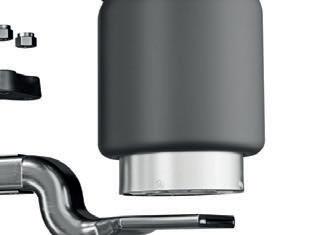


BPW IS BREATHING NEW LIFE INTO TRAILERS AND BOOSTING CIRCULAR ECONOMIES WITH A NOVEL APPROACH TO THE INDUSTRY.
When the times get tough, the tough get going! Or at least innovating for greater e ciencies in business, particularly where there are bene ts gained from sustainable and economic factors. is includes breathing new life into older or used trailers.
e BPW Group has found, a er looking at the present state of the market, that in economically challenging times the service life of trailers is increasing. is has resulted in a fresh approach - trailer refurbishments make trailers t for a second life, reaping the rewards derived from longevity, greater safety, reduced expenditures and environmental improvements.
For trailer owners, operating their businesses o en comes down to two factors –maximum e ciency with minimal expenditure.
Simply, trailer refurbishments that see the recycling and up-cycling of semi-trailers and components are playing a vital role in the global circular economy.
Moreover, the refurbishment of semi-trailers enables transport companies to optimise the costs associated with eet management, while complying with




ESG principles and actively contributing to sustainable development and environmental protection.
Opting for refurbishment, rather than replacement, re ects a transporter’s vision of, and commitment to, actively promoting circular economy initiatives that will help reduce carbon emissions, comply with strict emission regulations and optimise logistics operations.
Refurbishing trailers, instead of replacing them, provides signi cant emission reductions, showcasing the environmental bene ts of extending the life of a refurbished trailer.
A refurbishment before a trailer’s second life ensures state-of-the-art running gear functions.
BPW is utilising its high-quality and innovative running gear components as the basis for a circular economy focus, resulting in optimal operational costs and high road safety.
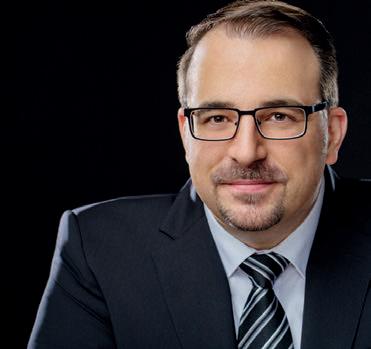
Great uncertainty and high cost pressures pose problems for the transport industry. Despite tight margins, companies must comply with stricter environmental regulations.
Coupled with this is the noticeable increase in the prices of new vehicles.
“Many vehicle eets are therefore postponing investments into their eet,” said BPW Head of Fleet Sales Europe, Ralf Merkelbach. e result of this is the service life of trailers is increasing, o en even doubling.
BPW’s own ndings have shown that, before trailers enter the second half of their service life, a refurbishment with high-quality components ensures the older trailers meet the latest stateof-the-art needs. is results in economically e cient and sustainable trailer operations.
“Our parts o er outstanding functionality and lasting design,” said BPW’s Head of Research & Development Business Unit (Truck & Trailer Components), Dr Daniel Köhler. “ is is how KTL re ning with zinc phosphating protects against corrosion and ensures a high residual value of the vehicle.”
In the liquid transportation sector, in which semi-trailers, curtainsiders, box vans and drawbar trailers require highly valuable trailer bodies, professional refurbishment has long been common practice.
Due to changes to the framework conditions, refurbishment also makes good sense for use in the standard range.
In this range, it would not be mandatory to refurbish the entire trailer.
“ e refurbishment of individual parts o en su ces in order to maximise transport e ciency,” said Merkelbach.
e optimisation of the vehicle, including the axles, brakes and wheel ends, therefore o ers great potential.
Cost-conscious customers can additionally attain weight, and functional bene ts for trailers with high mileage by replacing worn or aged components with parts from the BPW Reman line. e function of those parts is the same as new parts, thanks to industrial remanufacturing.
e Reman solutions from BPW consist of the same brands as new parts and are also subject to strict quality checks and o er an attractive price-performance ratio.
During the refurbishment process trailers can be equipped with, for example, BPW’s Airlight II - the light tube trailing arm and aluminium hub lightweight options to further optimise the usable load.
is is the lightest running gear currently on the market.
It is also possible to refurbish the trailer with modern assistant systems, such as the AirSave tyre pressure re lling system or the iC Plus retro t kit.
While BPW AirSave constantly checks the air pressure and corrects it, if necessary, the iC Plus vehicle generation, in combination with the telematics platform Cargo eet 3, facilitates needs-based eet management and smart maintenance management.
As a result, this maximises a vehicle’s uptime, while reducing cost and time pressure, thus bene tting the economic e ciency of the eet.
Refurbishment, like remanufacturing, is an integral part of a sustainable circular economy, with the goal being to keep products in economic circulation in the long term. One positive bene t of this approach is that it reduces the need for raw materials and energy.
“In the case of remanufactured disc brakes, the CO2 footprint is reduced by around 75 percent in comparison to the new product,” said Dr Köhler.
e outcome, creating global bene ts, is that eets whose trailers undergo professional refurbishment before the second life not only confront economic challenges, but also protect the environment and climate.
www.bpw.de
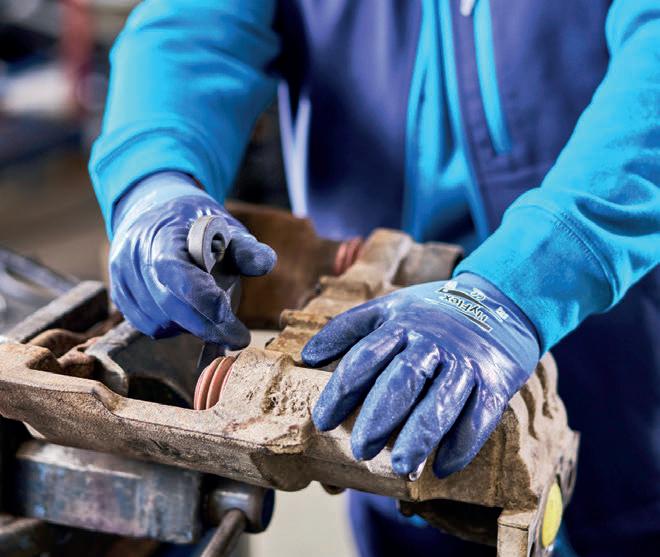

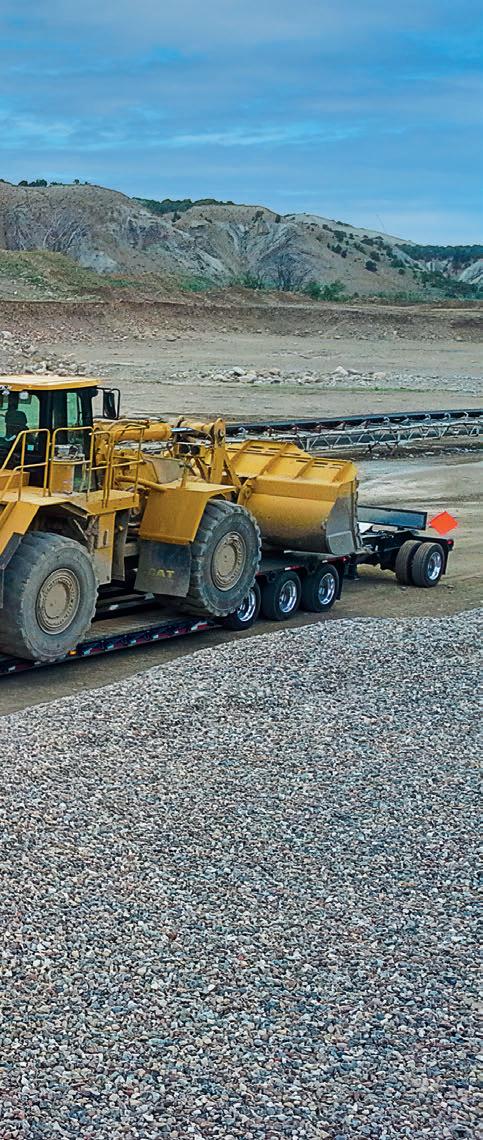
TALBERT MANUFACTURING’S CORE VALUES – SAFETY, DURABILITY AND MAINTAINING RESALE VALUE – HAVE REMAINED THE SAME SINCE AUSTIN TALBERT OPENED FOR BUSINESS IN 1938. THESE VALUES, ACCORDING TO TROY GEISLER, VICE PRESIDENT OF SALES AND MARKETING AT TALBERT MANUFACTURING, ARE AT THE HEART OF EVERYTHING THE US-BASED TRAILER BUILDER DOES.
As an ISO 9001 certi ed company, Talbert Manufacturing customers can depend on trailers that comply with regulatory requirements. In this rapidly changing economy, that is extra peace of mind.
“ e start of a new year and new political climate always brings uncertainties, but, in 2025, we are committed to being a strategic partner to our customers by streamlining and ordering the procurement process,” said Talbert Manufacturing Vice President of Sales and Marketing, Troy Geisler. “One way we do this is by working with our dealer network to ensure parts are readily available and easy to order through our new ‘Parts 1,2, 3’ portal. Dealers can easily place orders and provide accurate maintenance timelines to customers through this portal.”
Another way that Talbert Manufacturing provides its customers with convenient purchase options is through its Sourcewell contract which is reported to streamline the procurement process for more than 70,000 government and educational agencies as well as non-pro ts in the US.
“Customers bene t from Talbert’s Sourcewell contract because they save time normally spent on Requests For Proposal (RFPs) or Invitations For Bid (IFB),” said Geisler. “ is is because Sourcewell satis es the bidding process by sourcing and qualifying vendors, then o ering purchasing agents the ability to procure from readyto-use, competitively solicited contracts to make purchases more e ciently at the best possible price. ere was a 300 per cent increase in Sourcewell sales with Talbert Manufacturing from 2023 to 2024. is contract will still be available throughout 2025, so we hope to see even more interest in the year to come.”
In light of the state of manufacturing in the US, Geisler said many manufacturers across the board have seen challenges in the wake of the Covid-19 pandemic.
“Even though we’re already ve years out, we’re still trying to navigate the e ects this had on the trailer industry, including a surplus of inventory and supply chain disruptions,” he said. “At Talbert Manufacturing, we’ve accepted this challenge and continue to show steadfast commitment to our customers and industry partners. No matter what, we strive to be better every single day and bring the industry trailers they can rely on.”
Over the years, the US has made changes to bridge laws that allow higher load and/ or axle limits for trailers so long as they meet speci c requirements. is includes the
There is no one-size- ts-all when it comes to trailers. It’s all about partnerships.
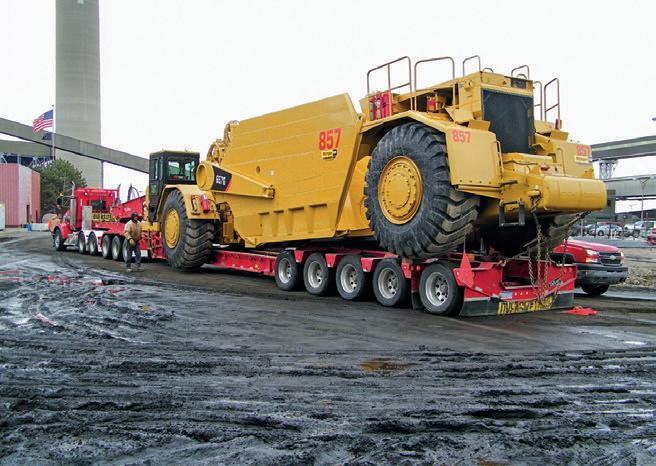
use of the Federal Bridge Formula which allows higher weights based on the number and spacing of the axles. While this is happening, equipment is reported to be getting larger and heavier.
“In anticipation of this shi , we’ve worked hard to ensure our trailers meet these demands and are able to meet the need for higher load capacities and more versatile con gurations,” said Geisler. “We have custom options with the ability to o er increased versatility with added shims and other load-bearing options.”
As for Talbert Manufacturing’s latest heavy haulage trailer options, the 55CC is a tried-and-true model in terms of optimal versatility.
“ is trailer features a hydraulic system to allow operation of the third axle only or a combination of third and fourth axles,” said Geisler. “ e 60CC/55SA-LD features an industry-leading 18” loaded deck height – two inches lower than competitive models — and 6” ground clearance. It also gives operators the ability to switch between con gurations for state-of-the-art versatility and limiting the need for additional permitting.”
Building a trailer requires taking into account multiple factors, such as load weight and dimensions.
As Talbert Manufacturing is a member of the Specialized Carriers & Rigging Association (SC&RA), Geisler has been honoured to represent the OEM as the Vice Chair of the allied group for the past year and is excited for the opportunity to serve as Chair in the coming months.
“ is allows me to directly participate in keeping industry leaders operating safely, legally and pro tably around the world,” said Geisler. “Our whole team prides ourselves in keeping a presence at all SC&RA events to support their mission. We plan to participate in the Annual Conference in April and the Crane & Rigging Workshop in September. We also plan to go to a few other industry events this year including the Florida Tow Show, the National Trailer Dealers Association Show and the American Towman Exposition. We are already gearing up for CONEXPO in 2026 and are currently in the midst of deciding what customer trailers to highlight at our booth.”
In addition to strong industry engagement and delivering quality trailers, Talbert’s dealer network is paramount to its success.
“ ey really bring that one-on-one service to our customers to provide Talbert products and continued support,” said Geisler. “We take every opportunity to thank them for their partnership and share their successes. One way we do this is by announcing our Top 10 dealers every year. In 2024, we had the opportunity to participate


in events put on by our dealers to connect with them and their customers and gain insight about their unique challenges. In 2025, we look forward to continuing to support our dealer network and get together just as o en, including at the NTDA Show.”
In terms of recent trailer orders, Talbert Manufacturing was awarded a $155,171,315 USD xed-price with economic-price-adjustment contract for the M872A4 semi-trailer. “ is Delivery Order was awarded sole source to Talbert Manufacturing because the government believes that only one company can provide the product,” said Geisler. “ e is the second continual ve-year open-ended award TACOM has awarded Talbert. In addition to supporting our dealers and customers, we’re committed to supporting the US military. We take pride in knowing that we have a robust trailer that’s been designed, tested and proven to go anywhere in the world to support our troops.”
www.talbertmfg.com

Talbert has been building world-class heavy-haul and specialised trailers to rigorous customer speci cations since 1938. It o ers complete lines of heavy-haul trailers and specialised transportation equipment for the commercial, industrial, military and government sectors.
Its trailers and equipment are used in diverse applications, such as renewable energy, aerospace, heavy construction, in-plant material handling, manufacturing and processing systems.











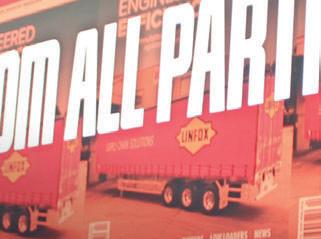


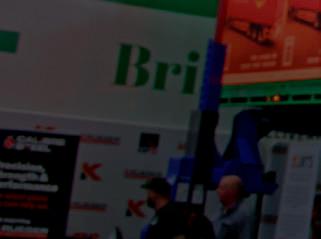



THE 2025 BRISBANE TRUCK SHOW HAS GROWN TO BE A BEHEMOTH, MUST-ATTEND INDUSTRY TRADE FAIR THAT IS RENOWNED ACROSS AUSTRALIA AND GLOBALLY.
From an unassuming start in 1968, as the Queensland Truck Show, the exponential growth of the Brisbane Truck Show has mirrored the growth and status of Australia’s transport industry, locally and internationally. at show commenced life with 20-or-so truck companies at the premises of Haulmark Trailers in the southern Brisbane suburb of Rocklea.
It has run every two years since 1979 and, between 1983 and 2011, was known as the Queensland Truck, Trailer and Equipment Show, before morphing into its current name in 2011.



Fi y-seven years down the road, the 2025 Brisbane Truck Show covered more than 35,000 square metres at the Brisbane Convention Centre, showcasing the Southern Hemisphere’s largest and most extensive array of trucks, trailers components, equipment and technology.
e award-winning biennial show has fully embraced technological advances in elds such as sustainability, driver safety and telematics, featuring more than 300 exhibitors, 22 truck and engine displays, together with about 30 trailers.
New trucks, including electric and zeroemission vehicles and refrigerated transport, from a range of manufacturers, such as DAF, Scania, Volvo, Isuzu and Eurocold were showcased.
is year’s edition can rightfully be billed as a record-breaking business-to-business trade show, surpassing gures for the 2023 show, which recorded almost 43,000 visitors over the four-day event.
e 2025 edition claimed the mantle of the ‘best ever’ Brisbane Truck Show, setting new attendance records of 54,790 attendees, with each day recording more than 13,000 visitors each, including a history-making 17,404 on the last day.
Approximately 400 transport and government


stakeholders and representatives attended the BTS o cial launch ceremony.
e growth of the show has seen it being internationally recognised as a world-leading industry trade show, with many international transport and logistics leaders, such as CIMC, JOST, SAF-Holland, Knorr-Bremse and ermo King, ensuring they have a presence in Brisbane every two years.
JOST Werke SE had its corporate big guns on show, with CEO, Joachim Dürr joined by Alex Tan, fomer head of Hyva and now JOST’s APAC region CEO.
Both executives saw the Brisbane Truck Show as a cornerstone for the Australian market, with Dürr describing Australia as “an intriguing country, a great landscape with great people, but also great truck and trailer applications.”
With a foothold in the Australian market the JOST duo said the BTS is a vital component of the global truck industry as it boasts strong presence by Japanese, Chinese, North America and European truck manufacturers and trailer manufacturers.
“ e (Australian) market takes a lot of attention because of its complexity, because of its uniqueness, not because of its size, but because it’s so special,” said Dürr.
“Australia is so complex and so interesting. We are very proud to be here with a company that is recognised very well by our customers.”
Dürr was very upbeat about the development potential of the Australian market, despite a slow start to 2025.
With Australia’s size, distances between cities, burgeoning agricultural and mining industries and diversity of truck and trailer needs, Dürr said the market was a good t for the catalogue of JOST and Hyva products.
“We all love Australian trucking, because we can learn so much of the di erent applications - road trains, all types of weights, all types of special applications. We only see that in Australia,” he said.
On a local scale, the optimism for the Australian market was just as buoyant, gauging by the stand for the Drake Group.
e truck show continued the Drake Group’s golden run with its truck and trailer business, showcasing rigs with names such as ‘King of Bling’ and ‘Queenslander’ and vertically suspending a 4.9 tonne rotating at top skel on its tip.
Apart from delivering a wow factor for show goers, the three-way turning container skel represented what the Drake Group represents.
“It’s also an example of how we go about what we do as an engineering company, where we take things to the next level,” said Drake Director and Business Unit Manager (New Trailers), Sam Drake.
“We we’re always looking at di erent innovations and di erent ways to skin a cat, so to speak. Di erent solutions.”
e Wacol, Brisbane company also displayed a swing wide extendable 5x 8 trailer called the ‘King of Bling’ – painted in sleek black and gold livery and complete with glitter on the deck, gold-plated number plates and gold trimmings.
CEO of Brisbane Truck Show organiser HVIA, Todd Hacking, said the 2025 results con rmed the show’s standing as a truly world-class event and Australia’s largest industry exhibition.
“ e objectives of the event are to improve safety outcomes, better industry perception, foster skills development and workforce participation, link peers and create new technology and innovation, and bring people together,” said Hacking.
e 2027 Brisbane Truck Show augurs to be even more of a record breaker.
www.globaltrailermag.com
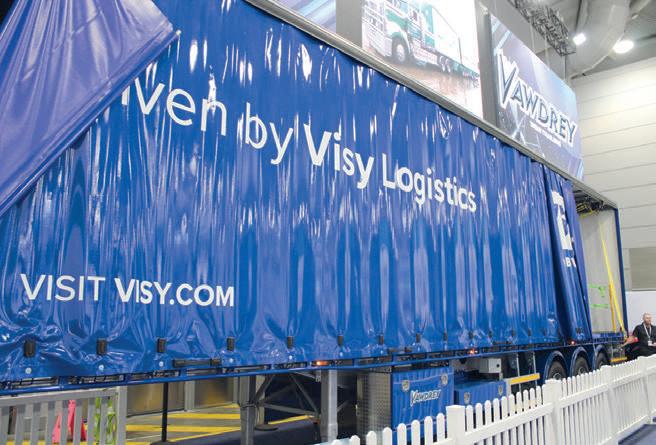
Jose/stock.adobe.com


9-11 SEPTEMBER 2025
Rio de Janeiro, Brazil
The conference hosts strategic debates on transport and distribution to strengthen connections between supply chains and the pipeline sector. www.riopipeline.com.br

Image: jovannig/stock.adobe.com
2025 15-17 SEPTEMBER
Long Beach, California
An exhibition that unites the entire intermodal freight supply chain. www.intermodal.org/intermodalexpo


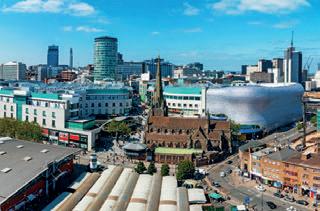
Birmingham, UK
The UK’s premier event for supply chain and intralogistics professionals. www.imhx.net/en/home.html




Image: Fotograhe.de/stock.adobe.com :

Karlsruhe, Germany
See current technology and mobility concepts of the future. www.nufam.de
KEEP A LOOK OUT
WORK TRUCK WEEK 10-13 March 2026
Indiana, US www.tmc.trucking.org
Image: Aliaksandr/stock.adobe.com



10-14 SEPTEMBER 2025
Kortrijk, Belgium
Get an overview of the latest developments in construction machinery, construction materials and construction vehicles. www.matexpo.com/en/home
TMC 16-19 March 2026
Nashville, Tenn. www.tmc.trucking.org
MID-AMERICA TRUCKING SHOW 26-28 March 2026 Louisville, Kentucky www.truckingshow.com
CV SHOW 21-23 April 2026 Birmingham, UK www.cvshow.com
INTERMODAL ASIA 22-24 April 2026
Shanghai, China www.intermodal-asia.com
SOLUTRANS 2025 18-22 November Lyon, France www.solutrans.fr/en



Image: Mapics/stock.adobe.com

14-16 OCTOBER
Antwerp, Belgium
More than 14,000 logistics professionals are expected to attend this event. www.transport-logistics.be/nl/
IAA TRANSPORTATION 2026 15-20 September Hanover, Germany www.iaa-transportation.com
MEGATRANS 2026 16-17 September 2026 Melbourne, Australia www.megatrans.com.au
INNOTRANS 22-25 September 2026 Berlin, Germany https://www.innotrans.de/en/
















In the US trucking industry, the peak trucking body, the ATA, has reported that the of freight shipments, such as by cyber attacks, cyber fraud and data breaches, cost the supply chain up to $35 billion USD (€30.8 billion) annually.
Data breaches in the global logistics supply chain sector throughout 2024 have seen the average cost of a data breach rise by 10 per cent, to be $4.88 million USD (€4.31 million), according to IBM’s Cost of a Data Breach Report.





FCyber security is a necessity for logistics supply chain operators. Image: Anak/adobe.stock.com
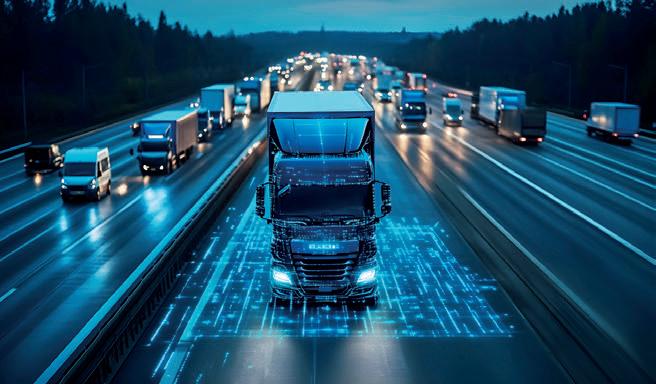



rom telematics to real-time temperature and location monitoring, the global transport industry has become increasingly digitalised, enabling operators to monitor the status of their eets, as well as the movement of goods.
It is no less relevant to the logistics sector, facilitating the rapid on-time shipment of goods, as businesses are more and more plugged into tracking and shipping their products.
A 2022 research EY supply chain report found that by 2035, 45 per cent of supply chains are expected to be mostly autonomous. is is already happening with robots in warehouses, driverless trucks and delivery drones.
Alarmingly, the Maersk Logistics Trend Map of 2025 found two-thirds of global supply chain decision makers rated the spectre of cyber security attacks as highly relevant in 2025.
Maersk’s research shows that cyber security in the logistics market is expected to grow at 12 per cent (CAGR) to 2037, by which time it is estimated to be worth more than $36 billion USD (€32 billion).
is means big business for R&D in cyber security, as seen by almost 5,000 cyber security-related patents led between 2019 and 2023.
In a parallel growth surge, cyber attacks in logistics supply chain around the globe have become increasingly pro table, with Maersk estimating that about 27 incidents impacted transportation and logistics companies in one year from July 2023-2024.
e Netherlands’ Stenden University of Applied Sciences found that the shipping industry su ered an exponential rise in cyber attacks over a 20-year period, going from none in 2003 to 64 in 2023.
In its 2025 Data Breach Investigations Report (DBIR), Verizon decoded 12,195 data breaches across 139 countries to nd that the number of global cyber incidents involving so ware vulnerabilities, o en using AI, increased by 34 per cent in the last year.
at report found that 30 per cent of breaches were linked to third-party involvement, twice as much as 2024.
In addition, the report found that ransomware was present in 44 per cent of all breaches, with the median amount paid to ransomware groups being $115,000 USD (€102,000), while 64 per cent of those a ected did not pay ransoms.
While the Verizon research found the level of human involvement in cybersecurity breaches remained about the same as the previous year (60 per cent), the main factors in the cyber attacks were through credential abuses and social actions, such as phishing.
With cyber security data at our ngertips, logistics supply chain providers need to be proactive through comprehensive cyber security plans.
With the ubiquity of digitalisation throughout all aspects of the logistics industry, Maersk describes the need for improved cyber security measures akin to creating a ‘digital fortress’. rough the appropriate level of planning, logistics operators can secure, or at least best protect, their business interests through advanced digital security measures, cyber security awareness and more tailored initiatives.
Conducting business securely in an increasingly digitalised and global commercial environment demands that all logistics supply chain operators rapidly embrace cyber security defence and mitigation e orts, or risk having their hard-earned futures stolen.
www.globaltrailermag.com












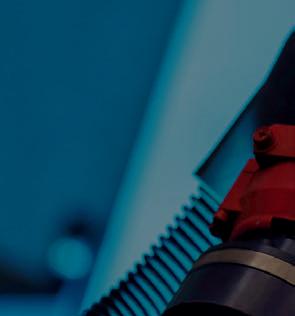


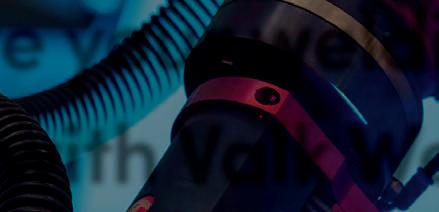




With over 45 years of experience, Valk Welding provides customized solutions, including welding wire, consumables, software, training, and support. We assist with production automation for both large series and single pieces, and for small to large products. Valk Welding is driving change in Europe and beyond!













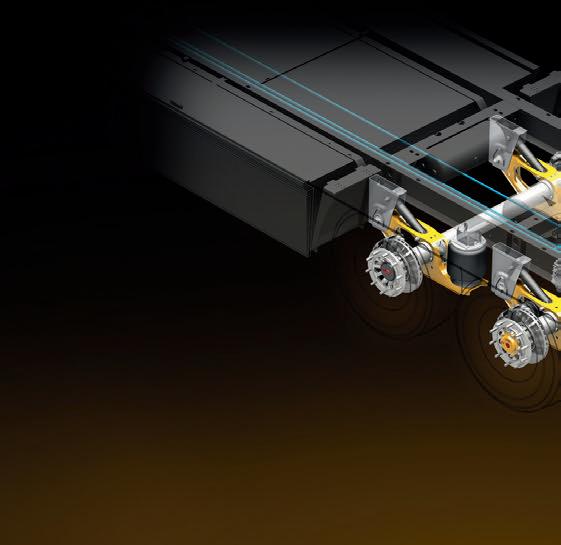




Heavy transportation traffic becomes electric, green and quiet with the recuperation axle SAF TRAKr
Every great E-Mobility concept begins with a first step: the new e-axle system from SAF-HOLLAND – the innovative technology for the electric transformation. safholland. com
